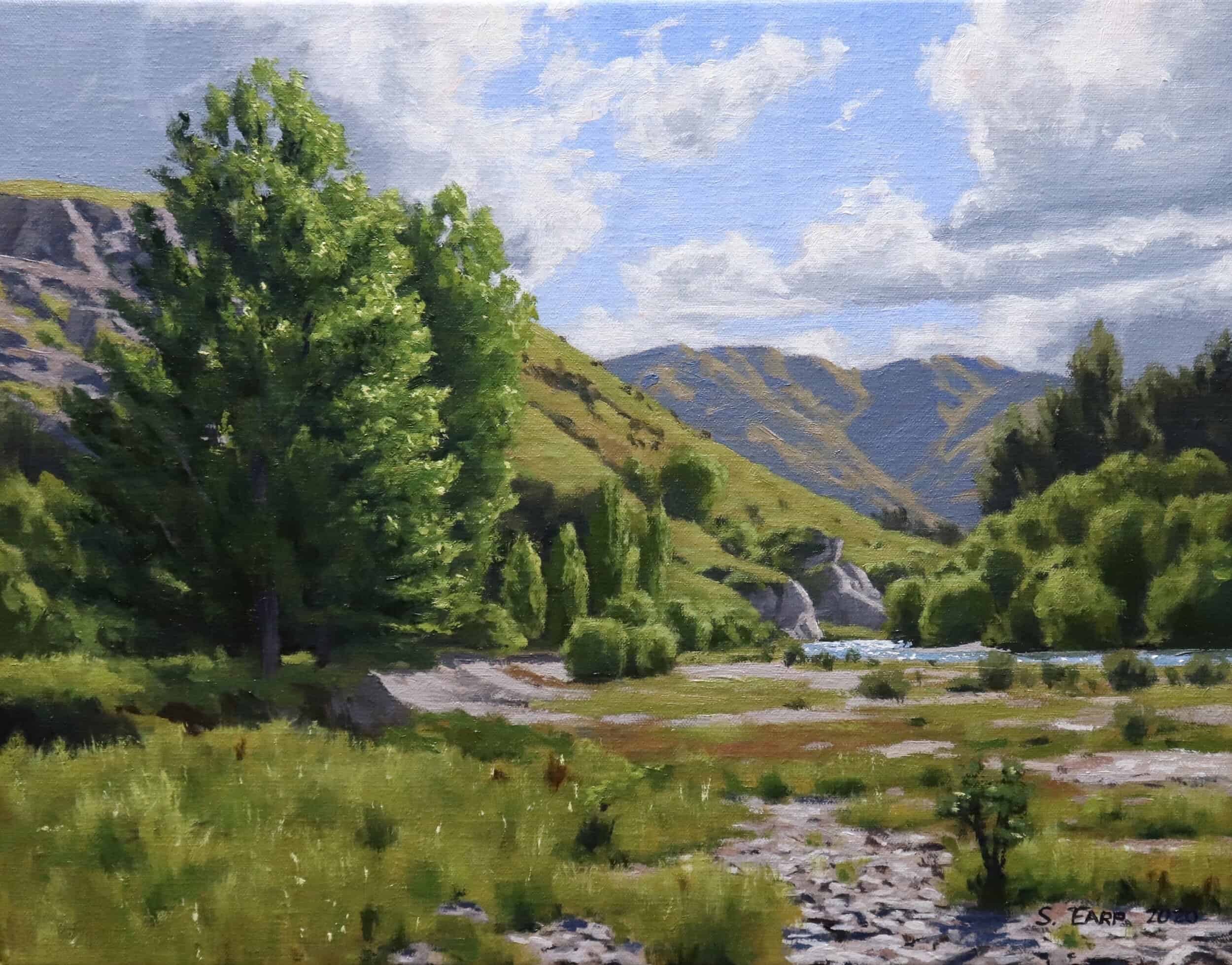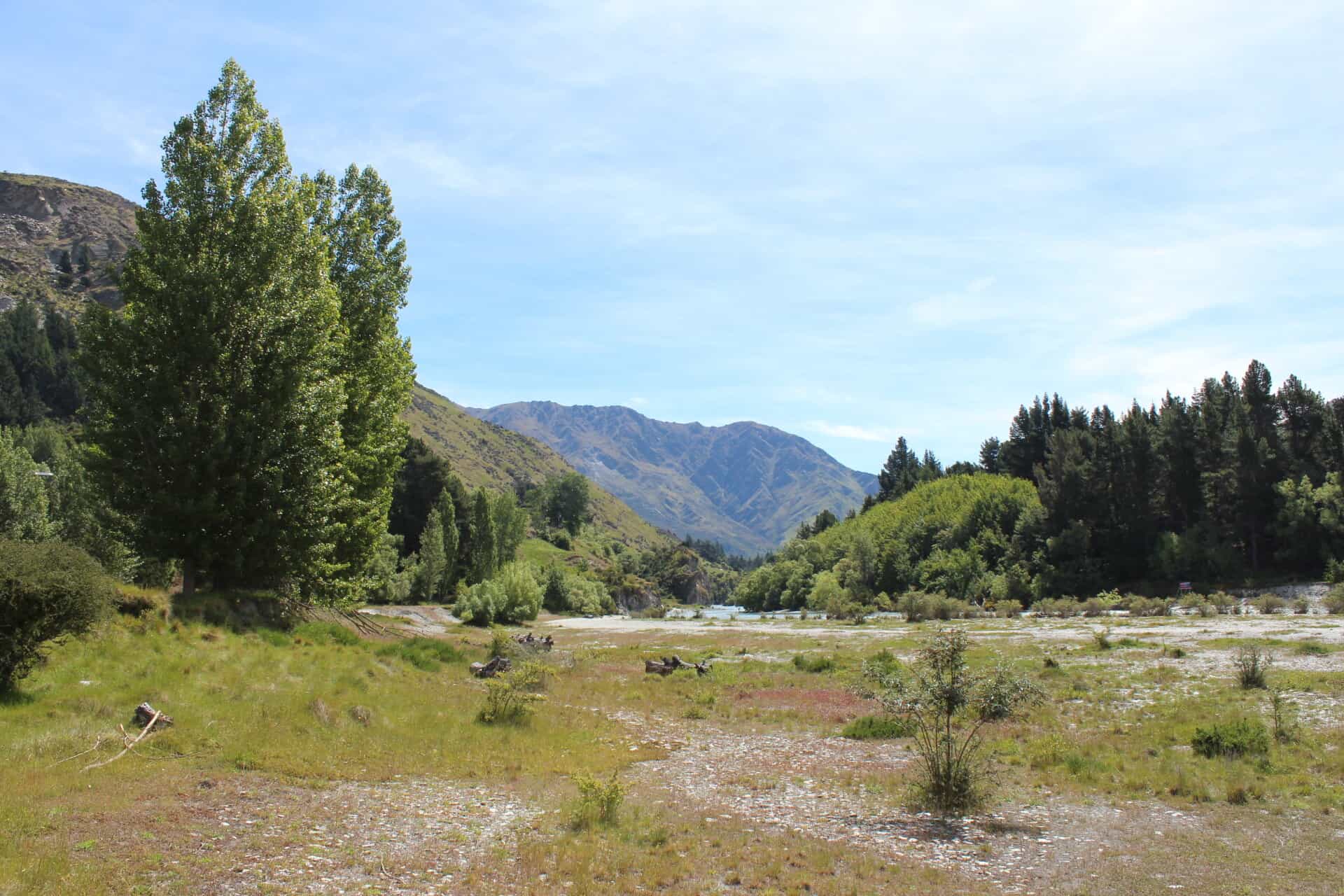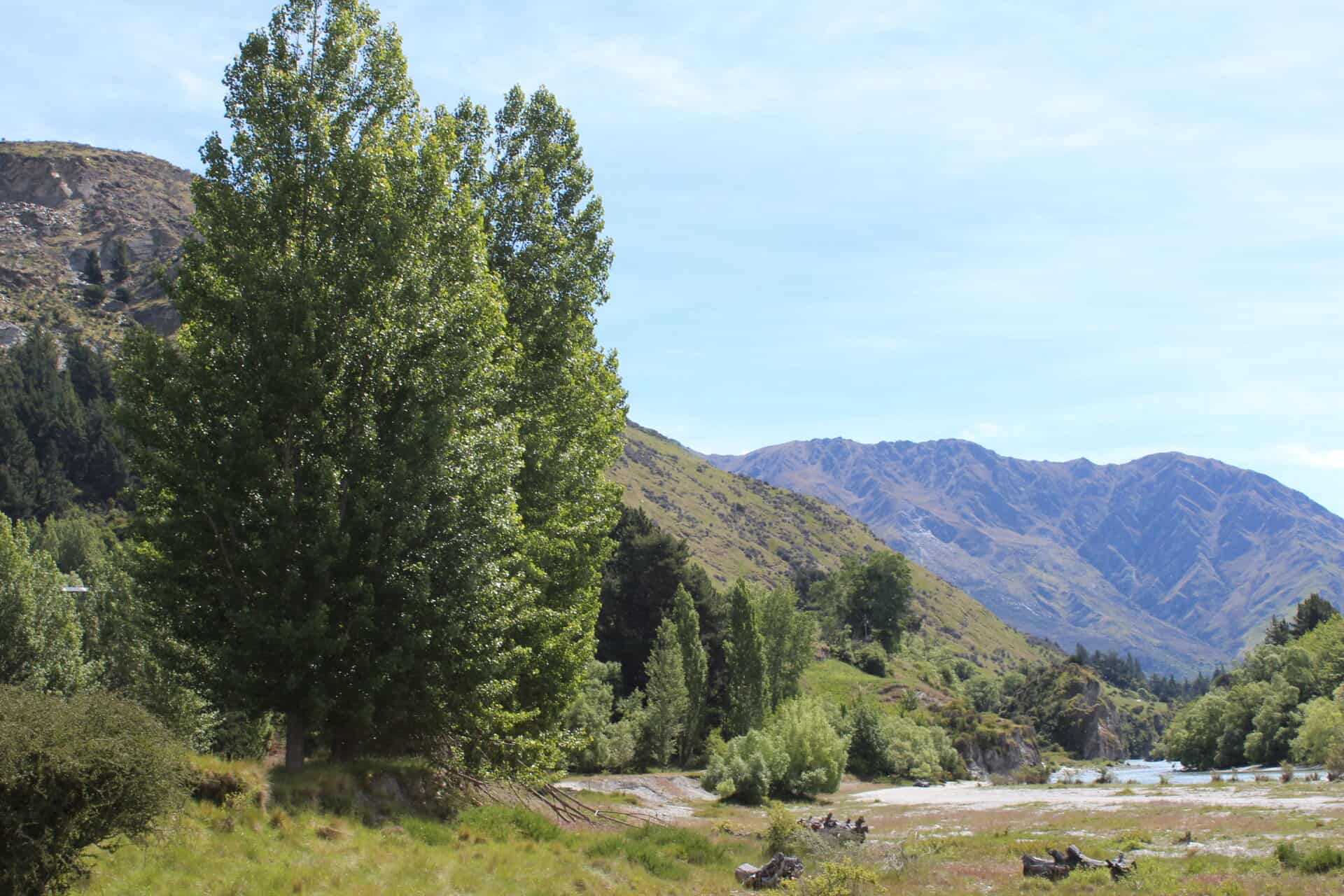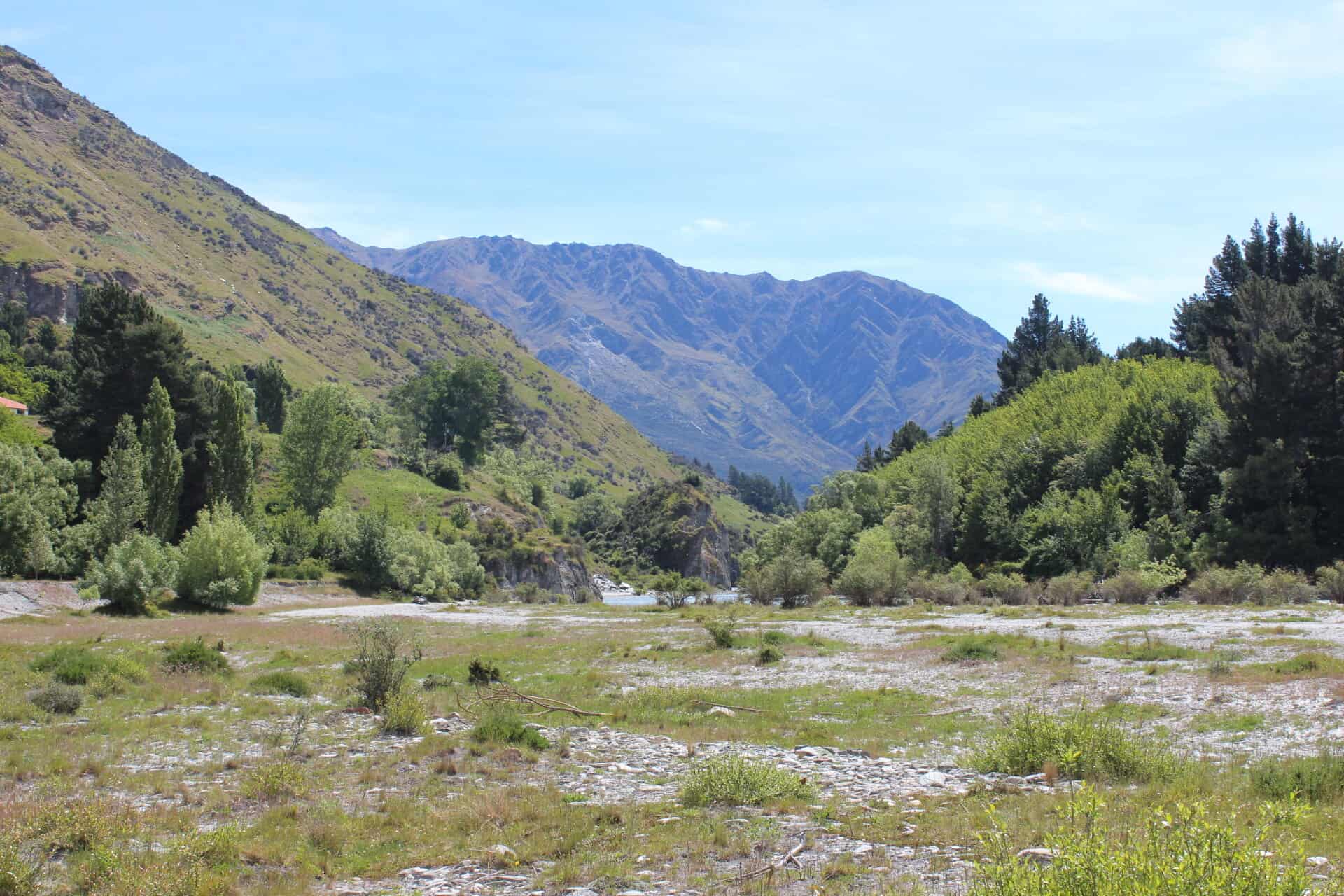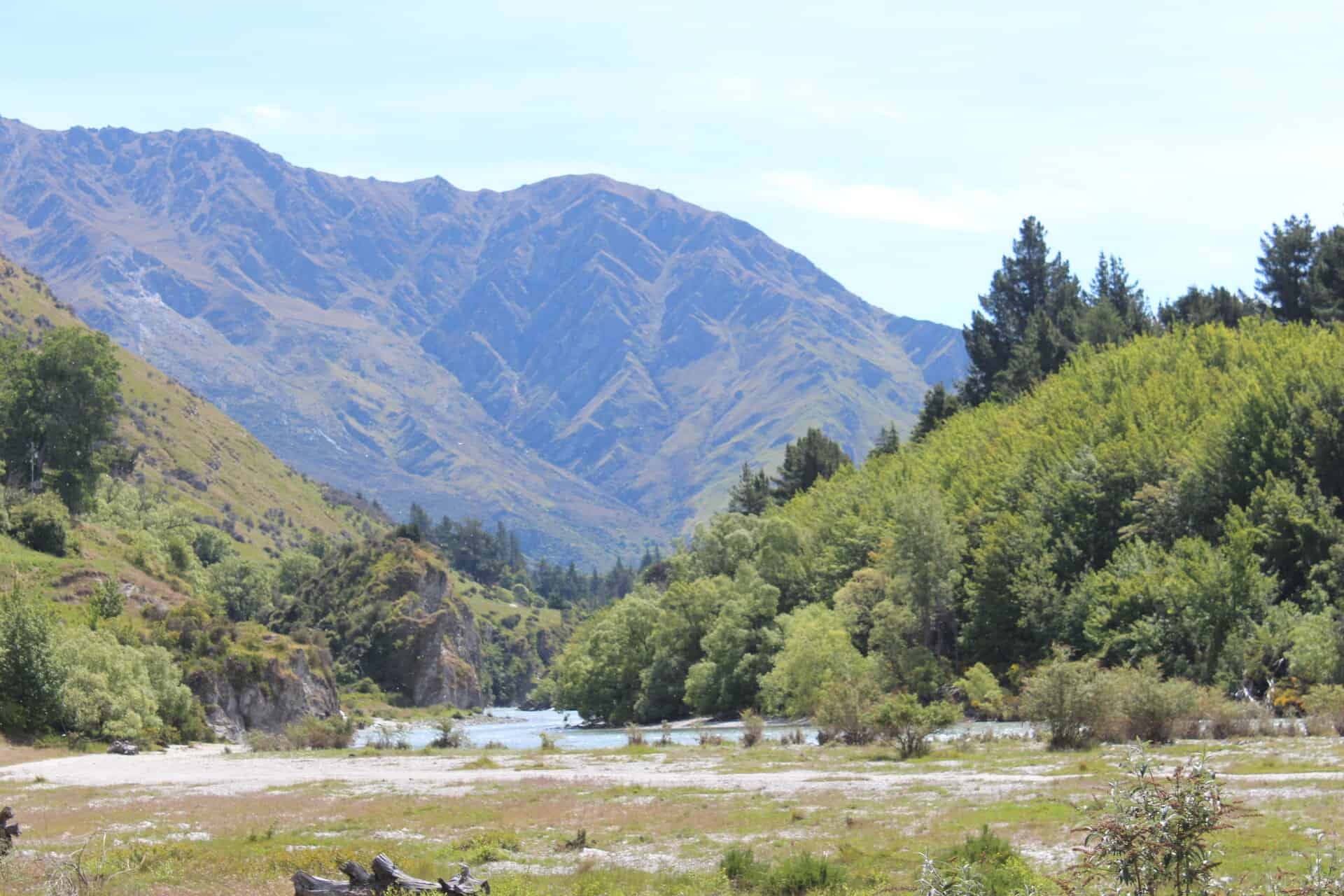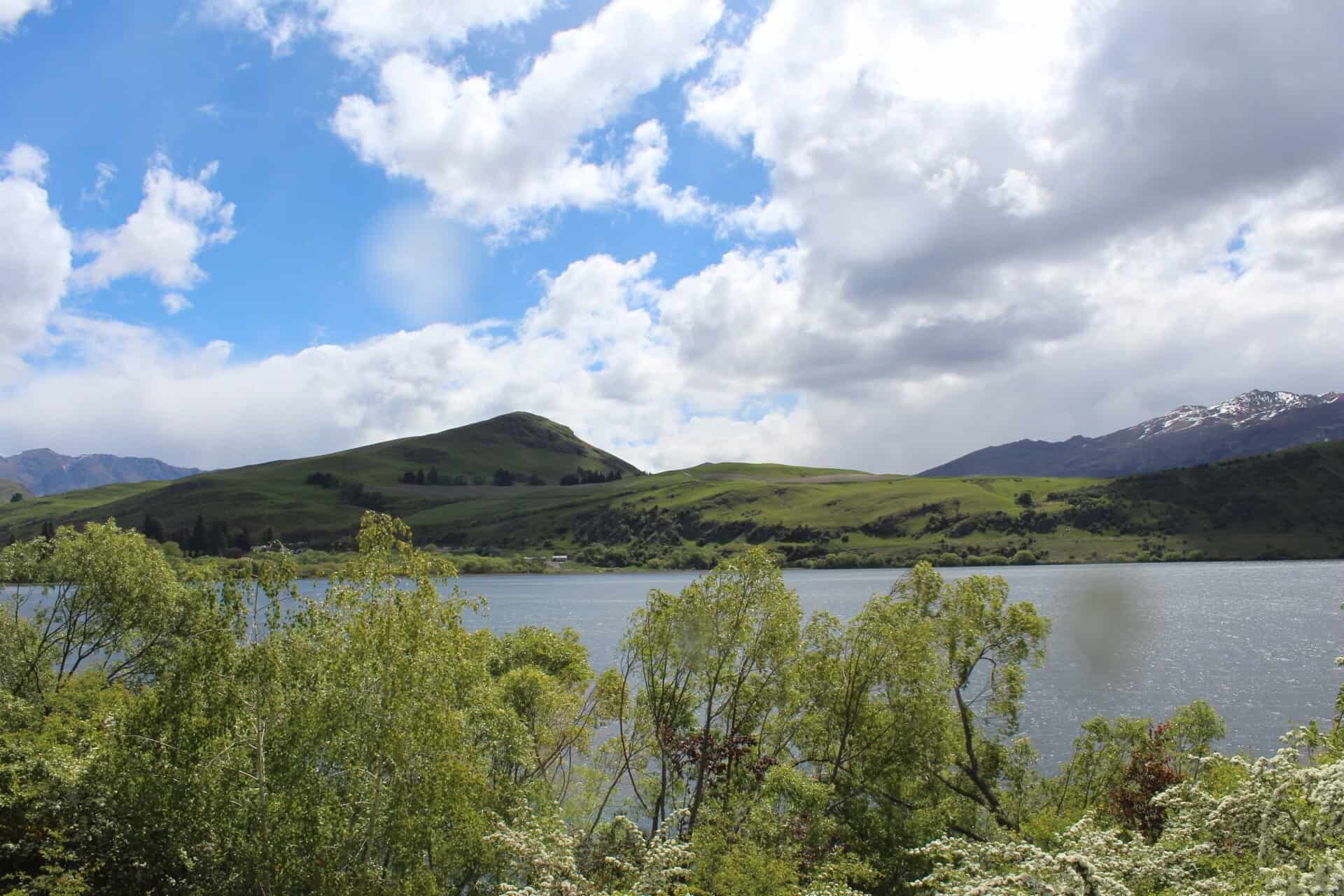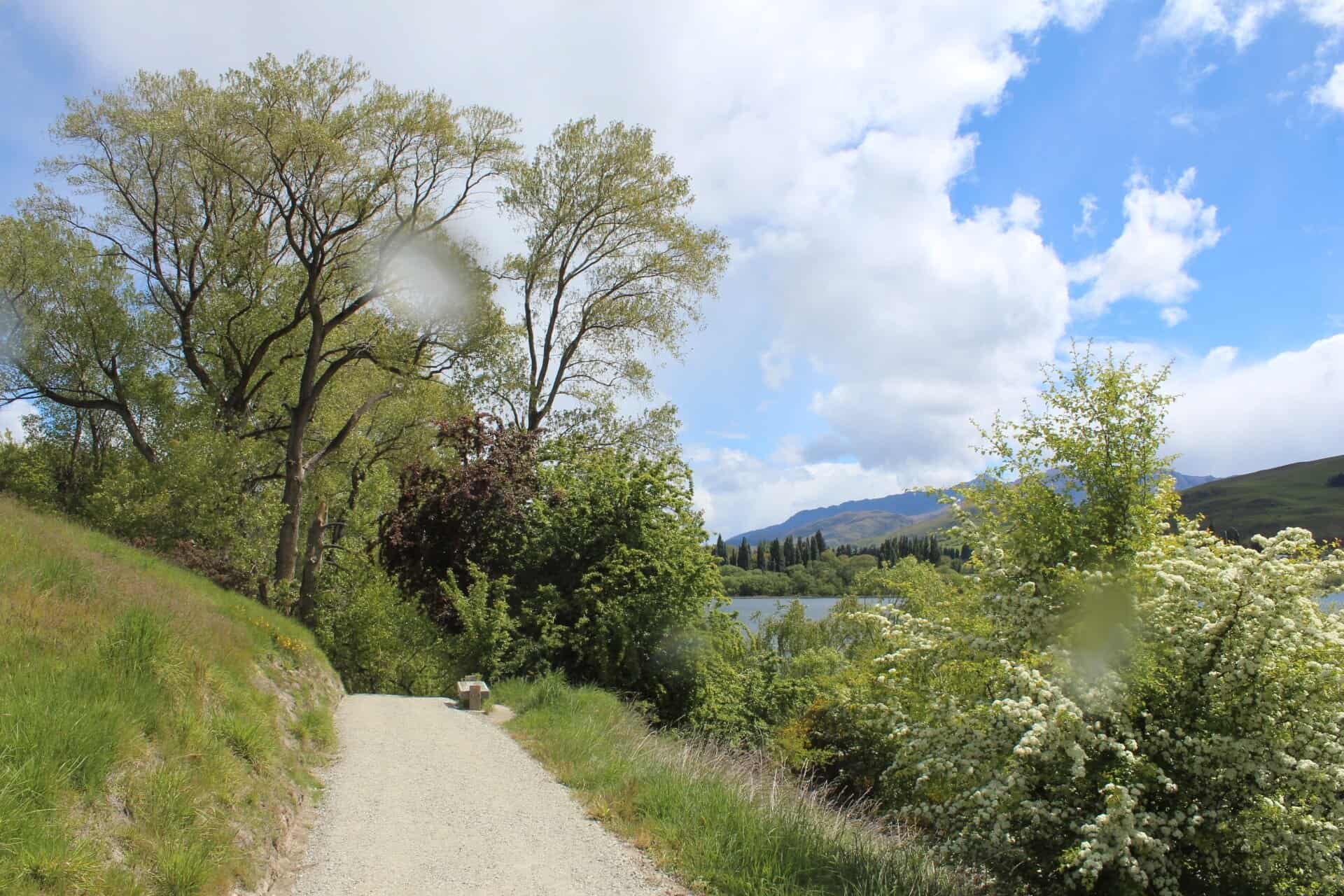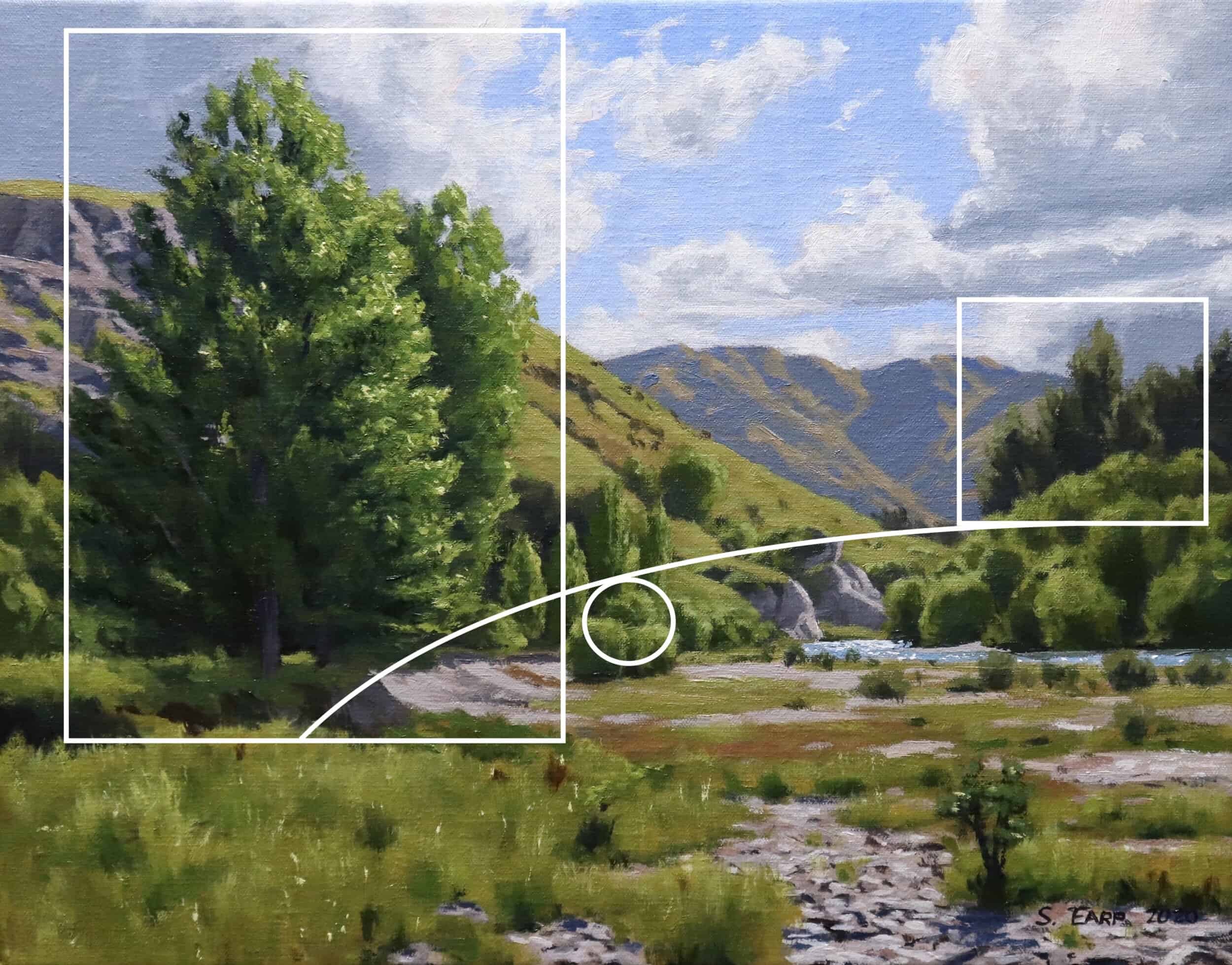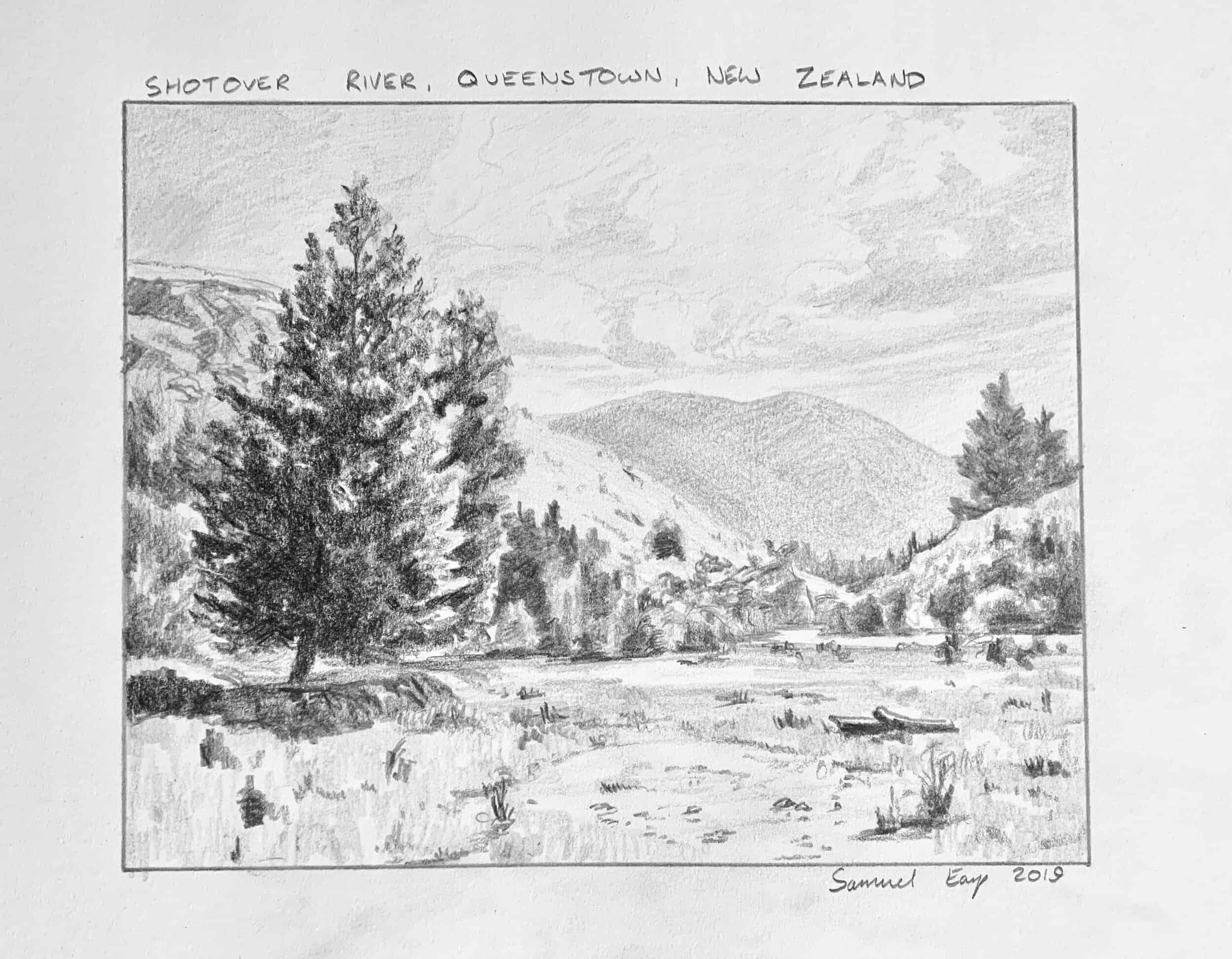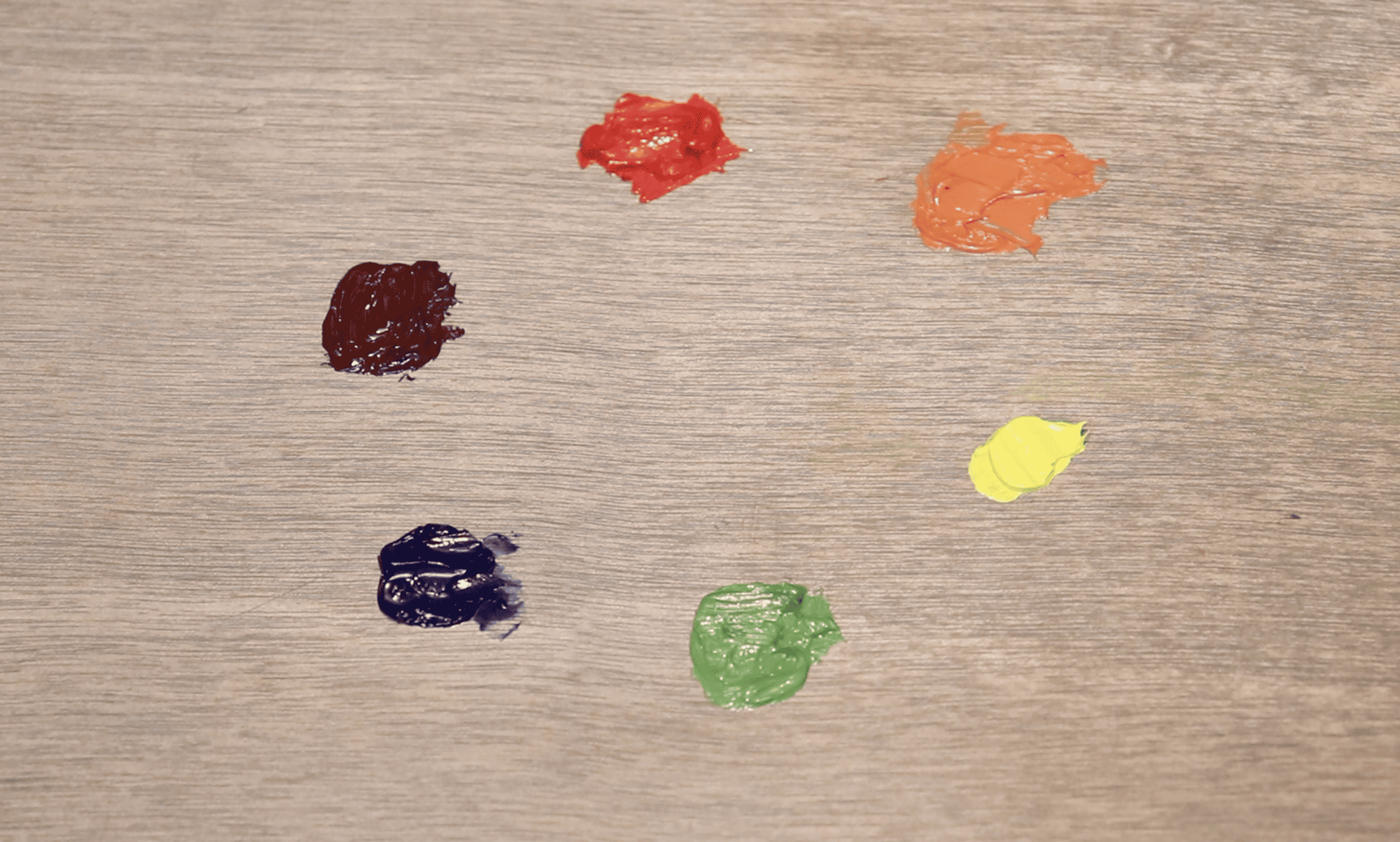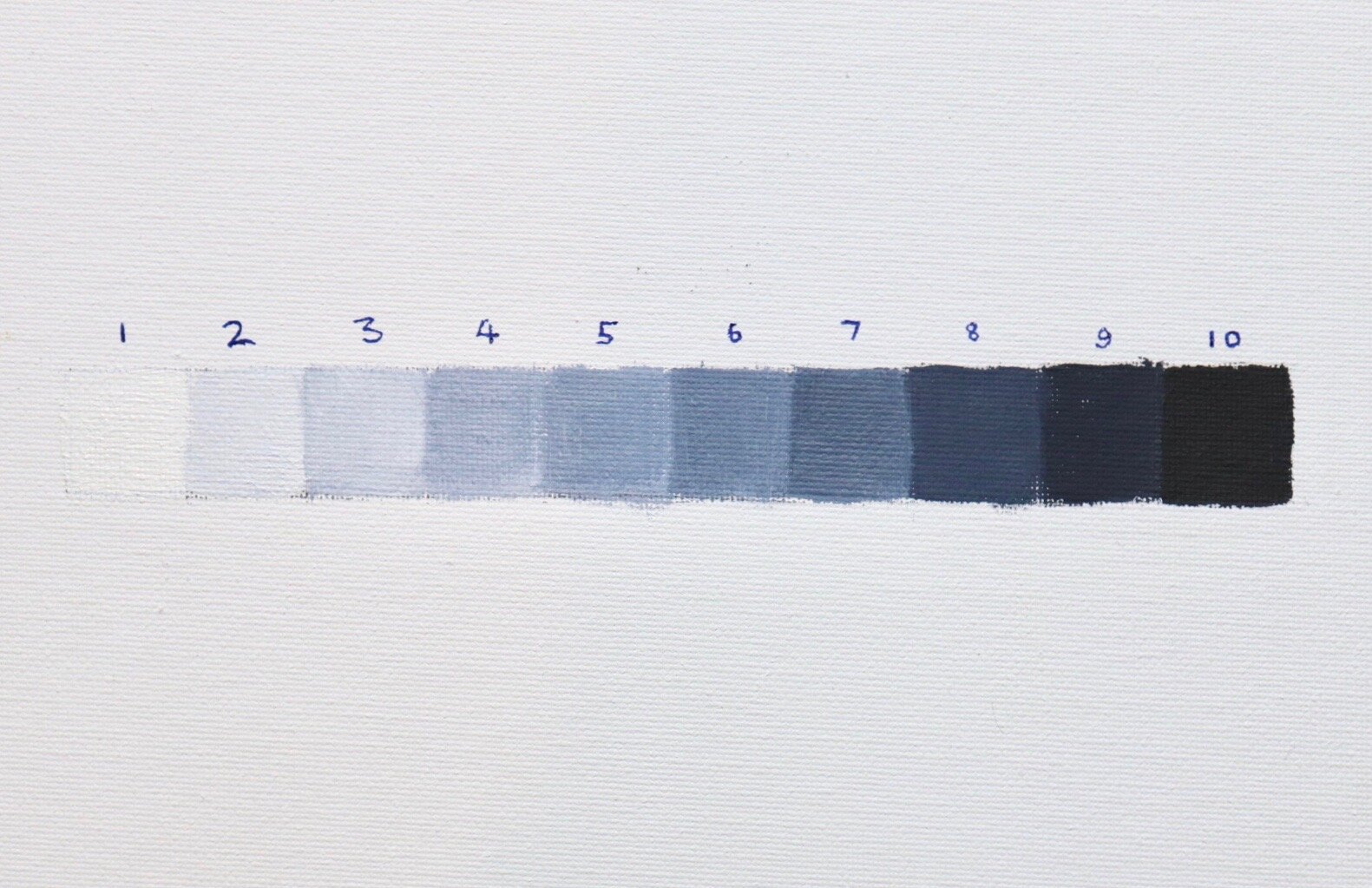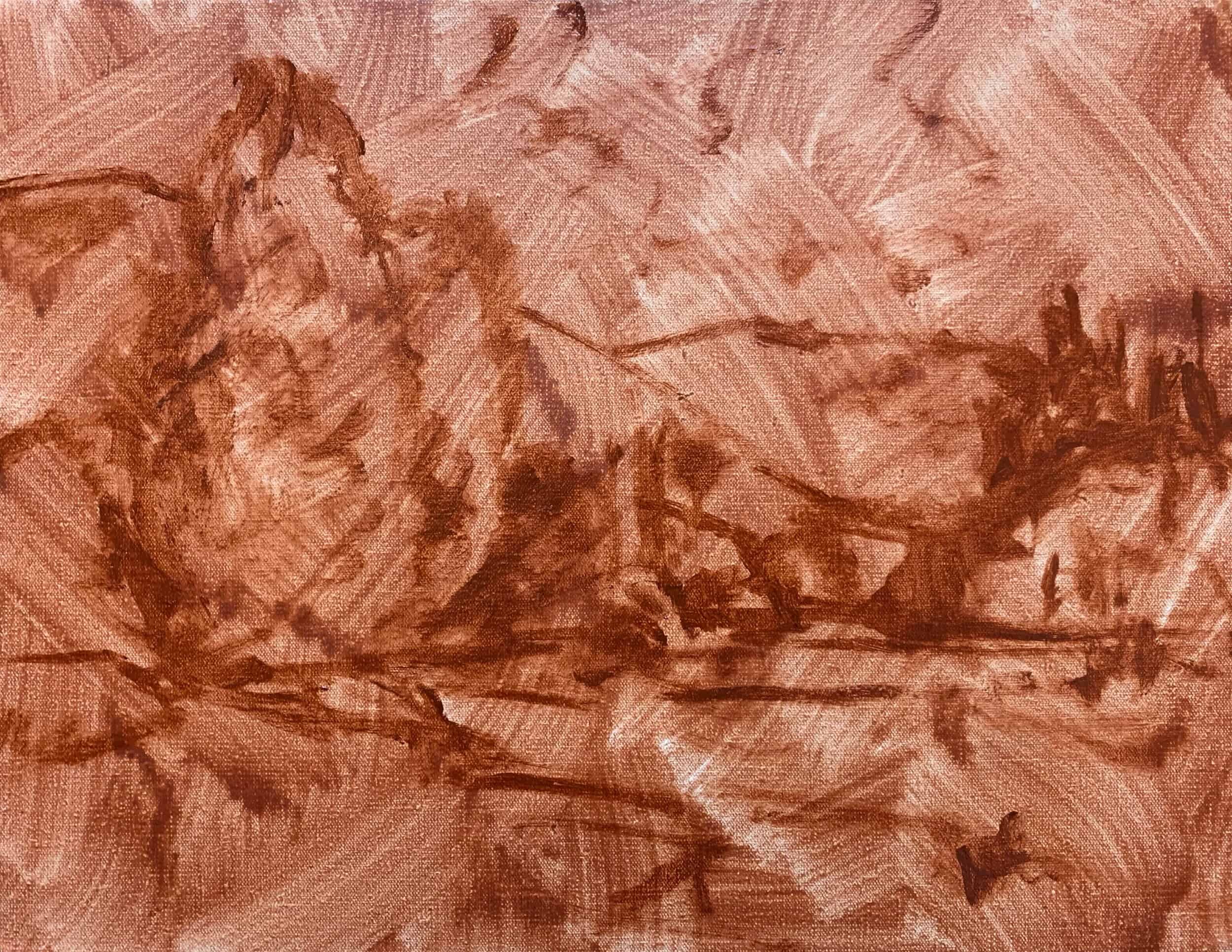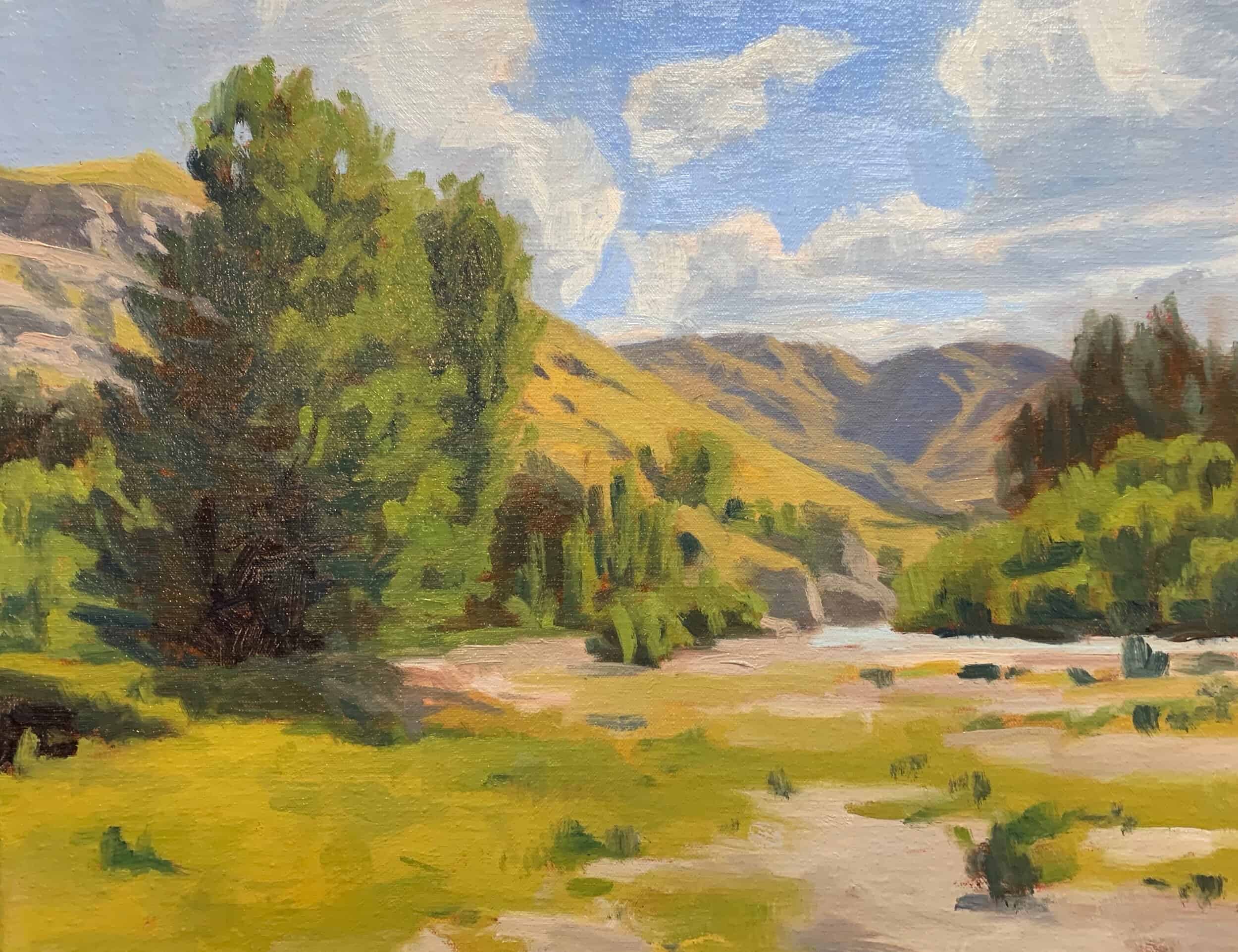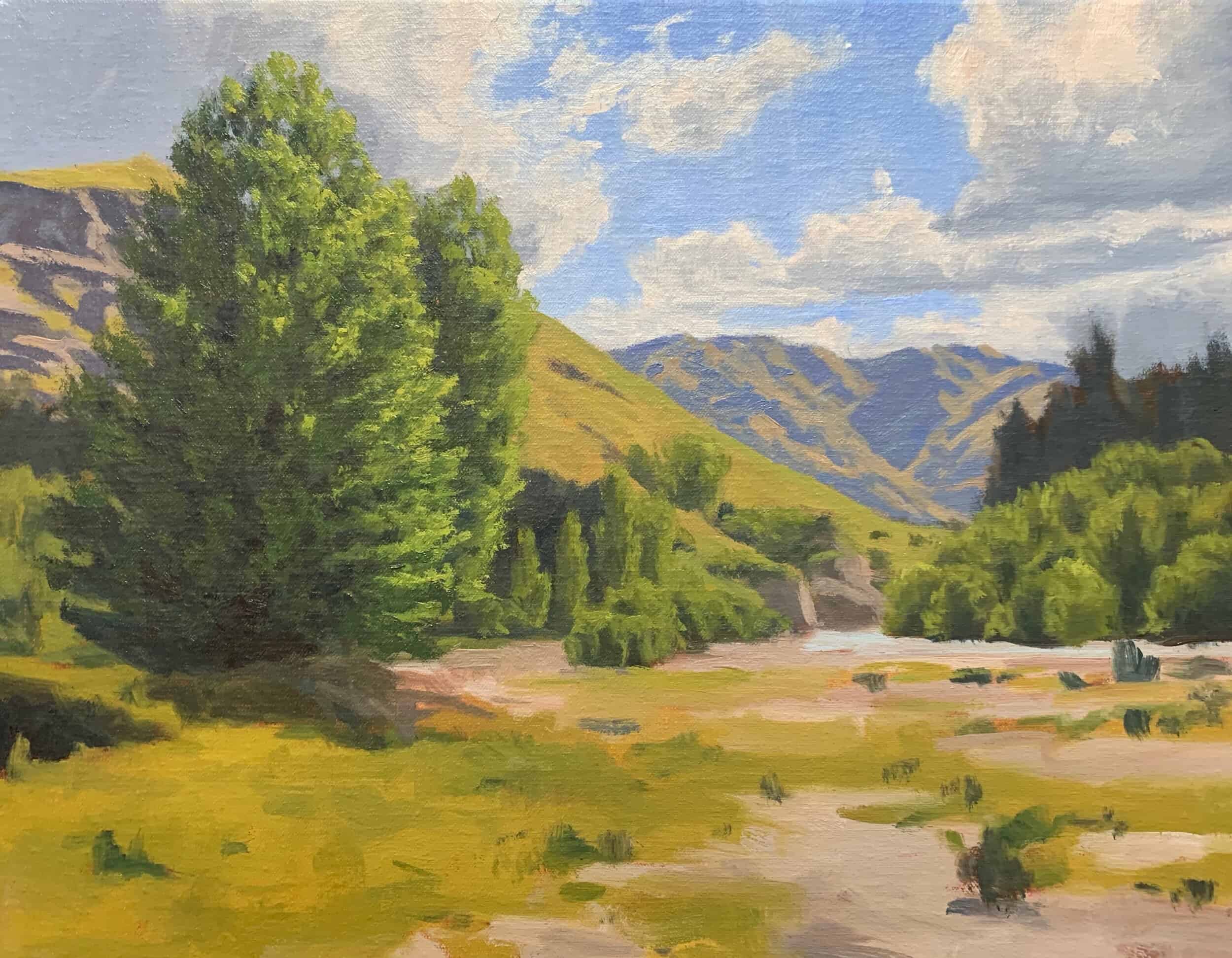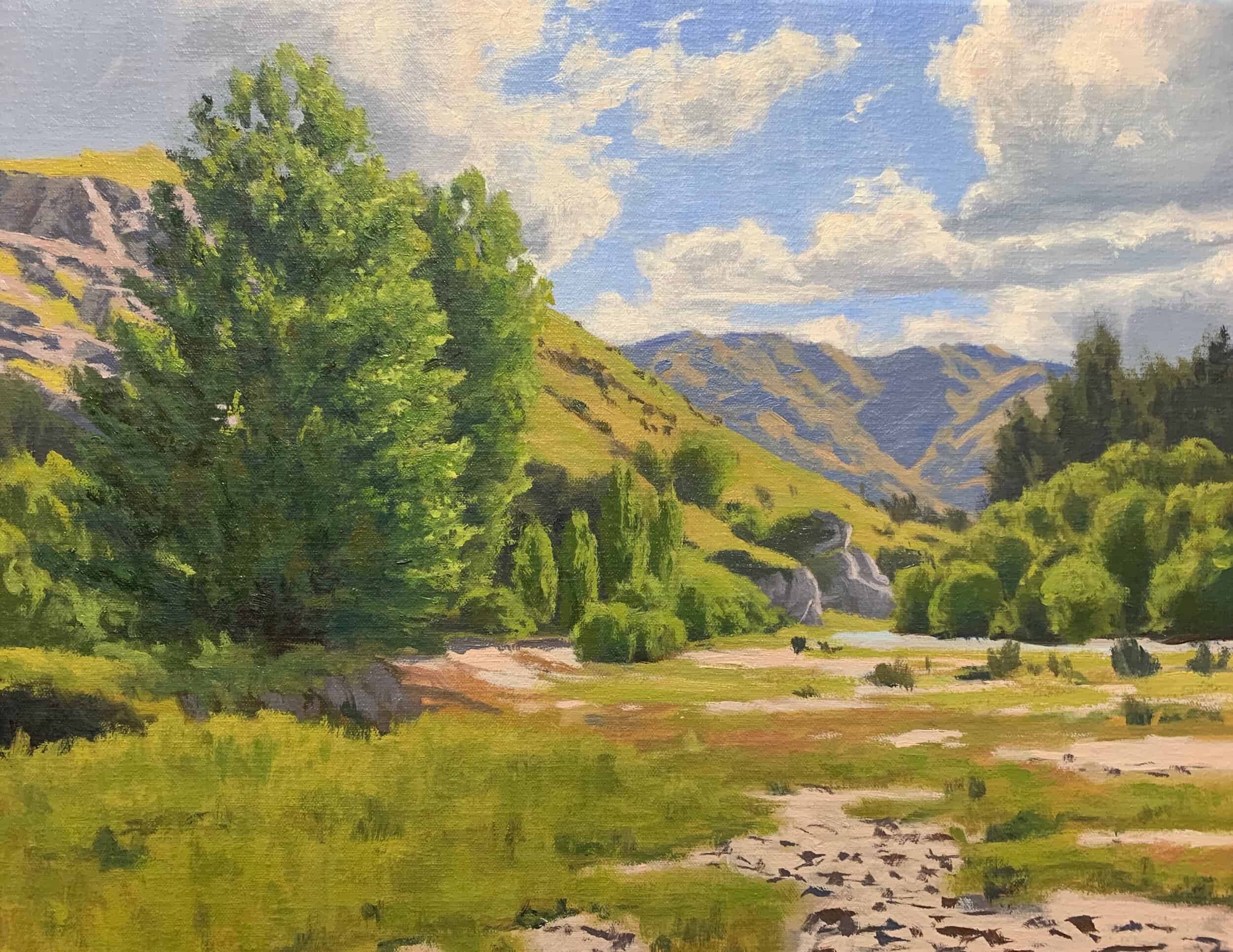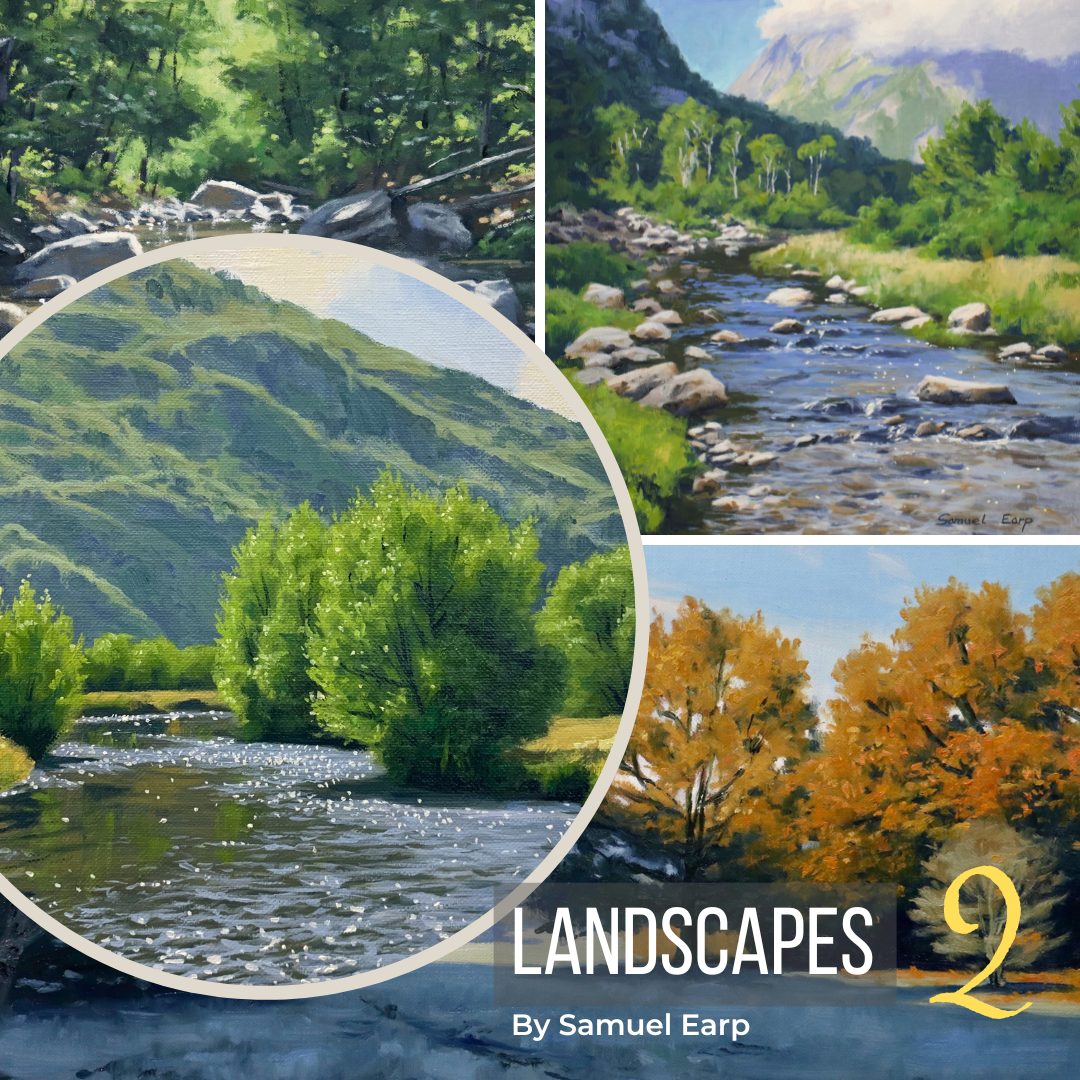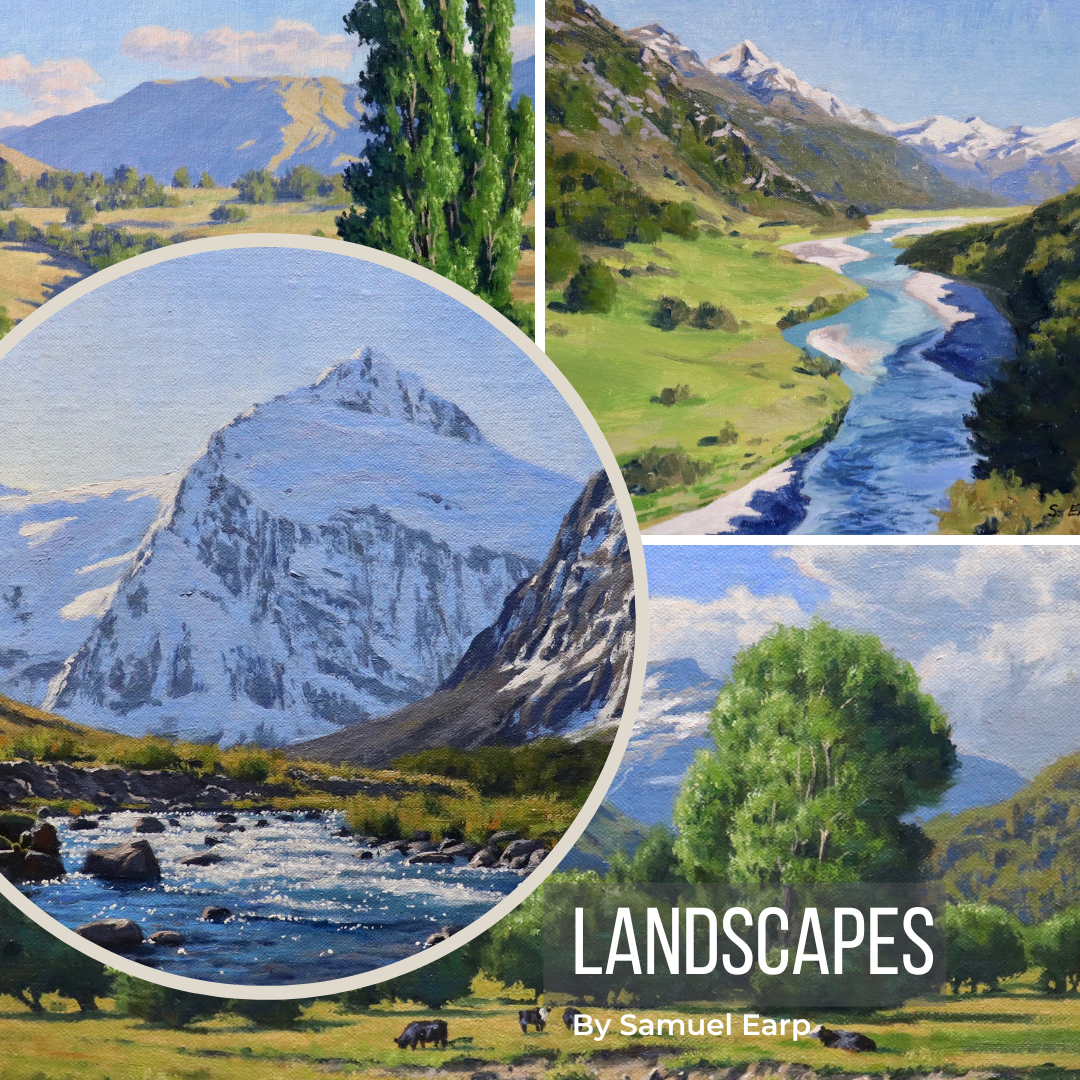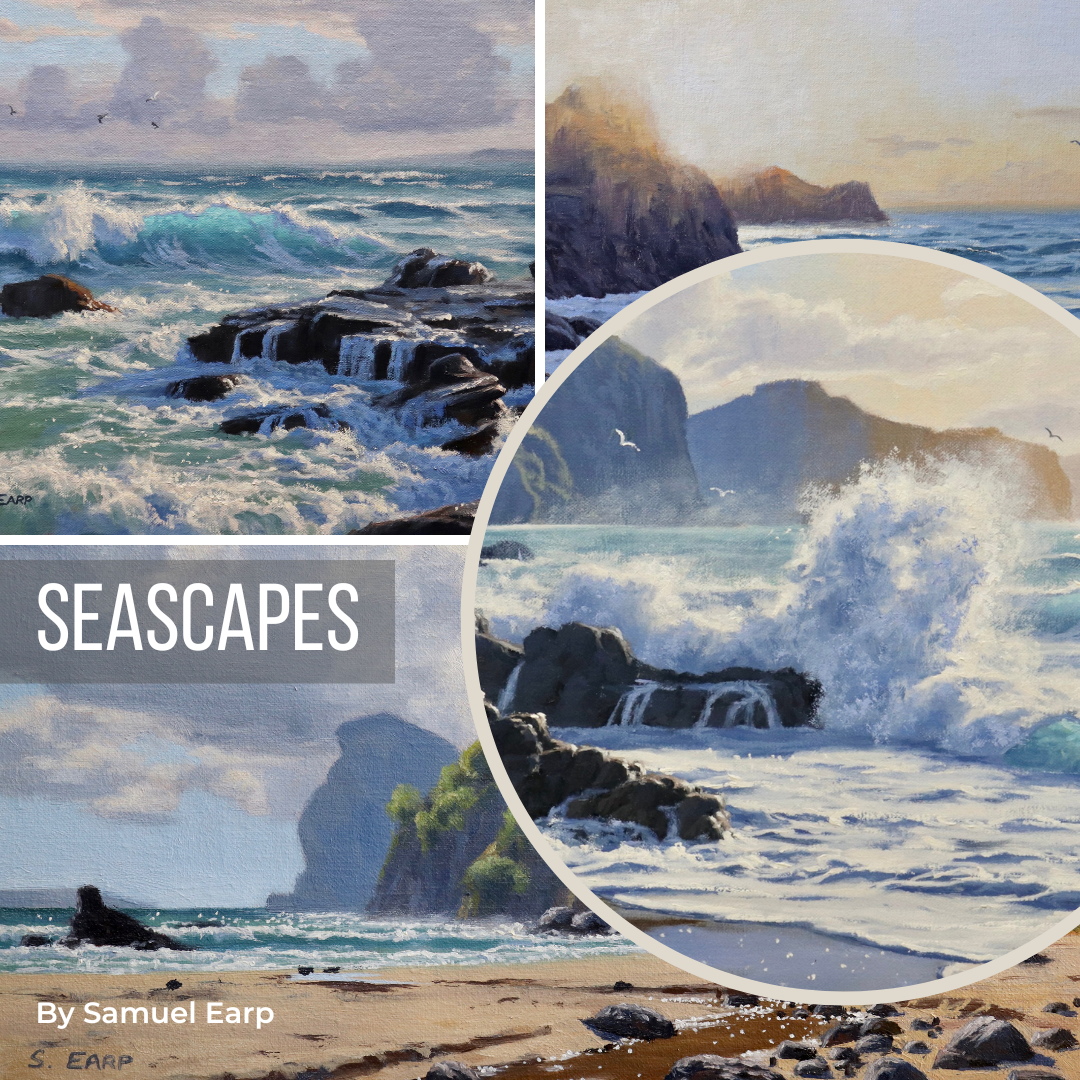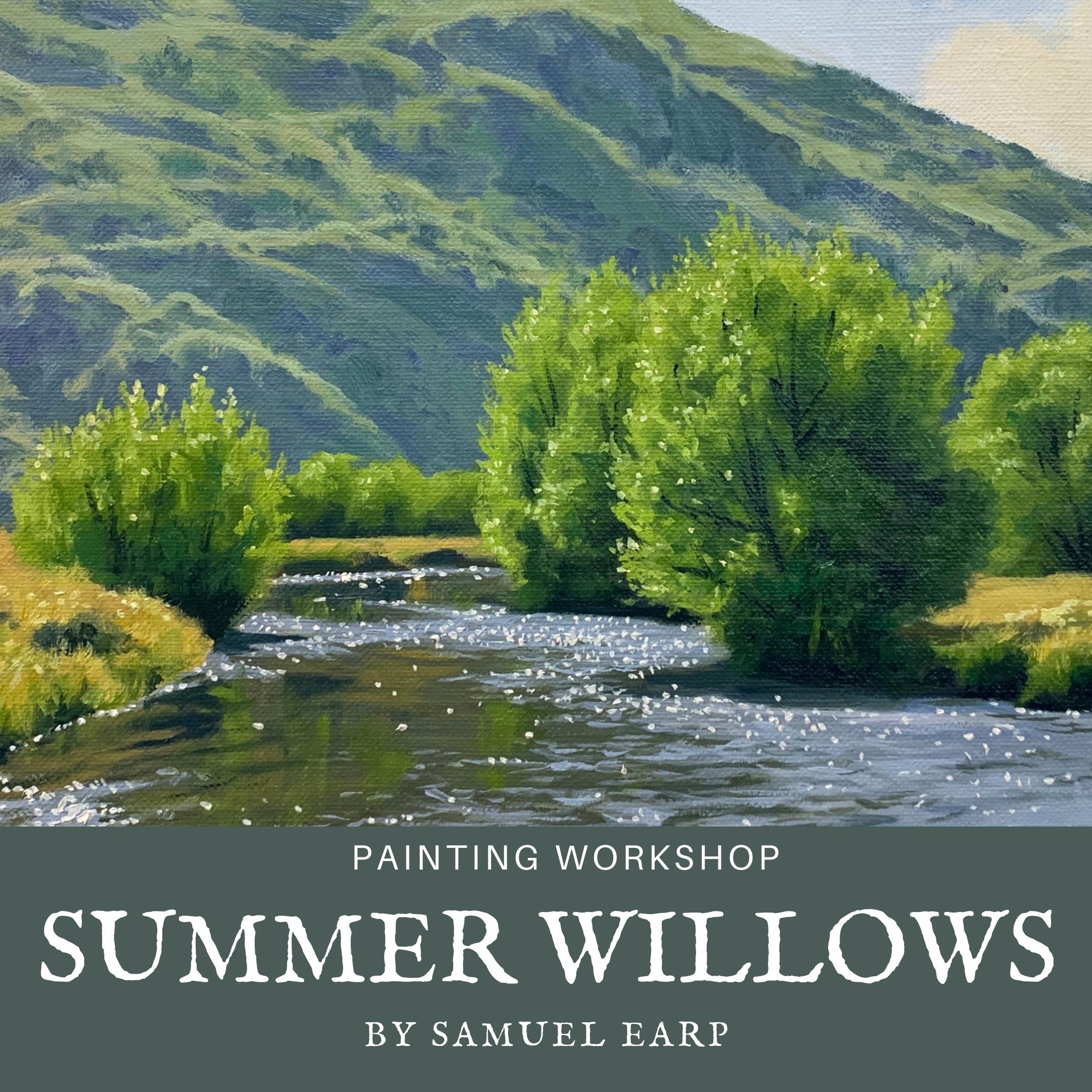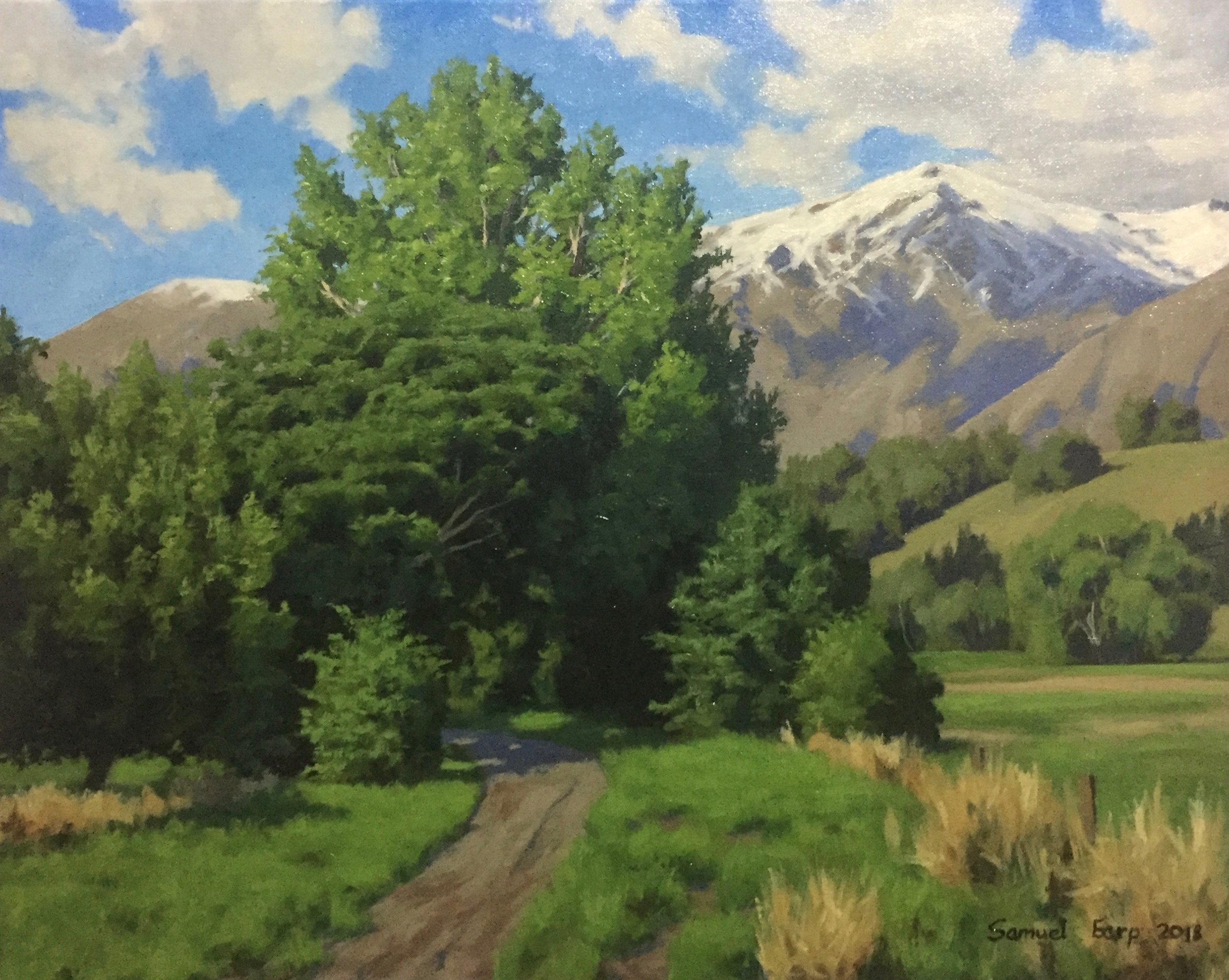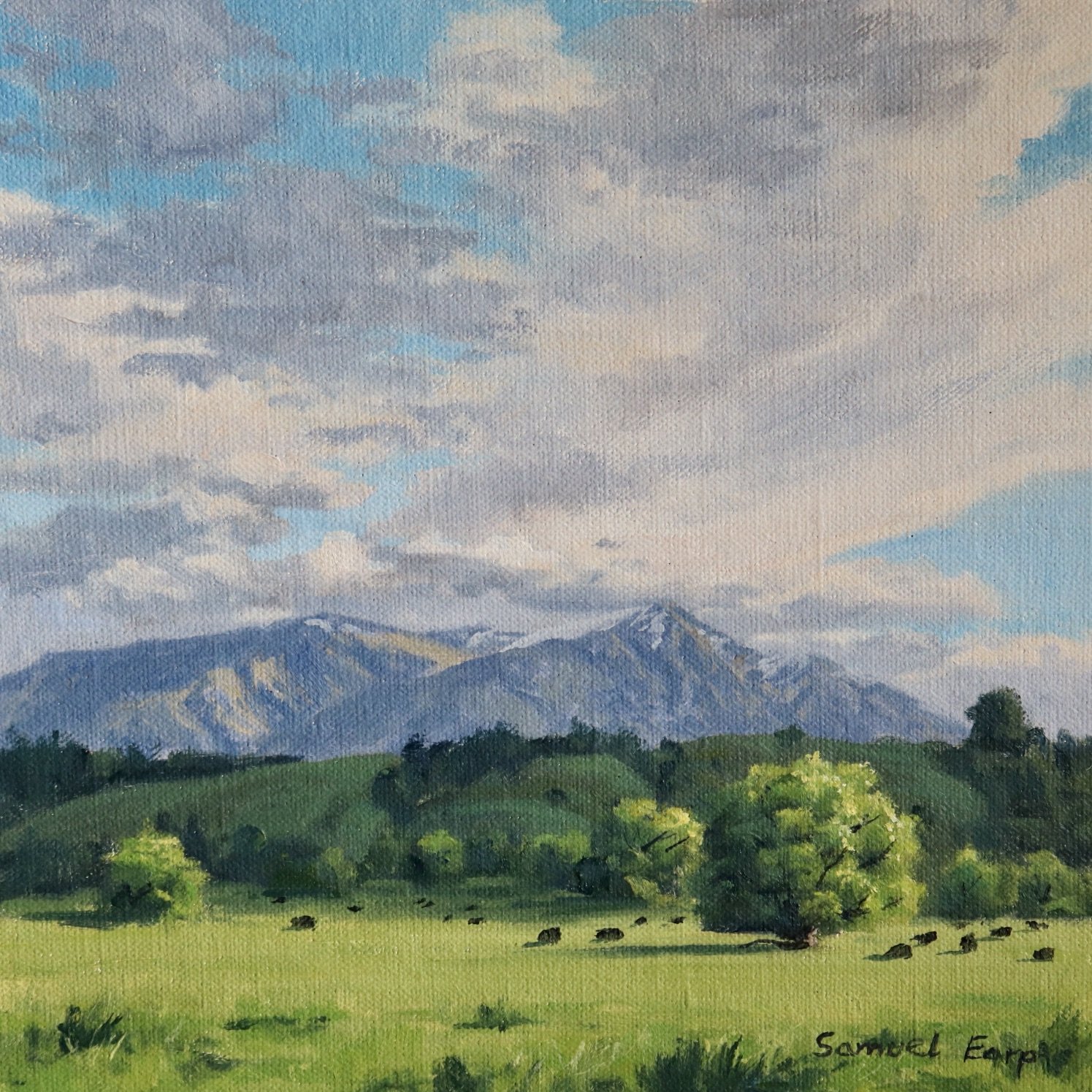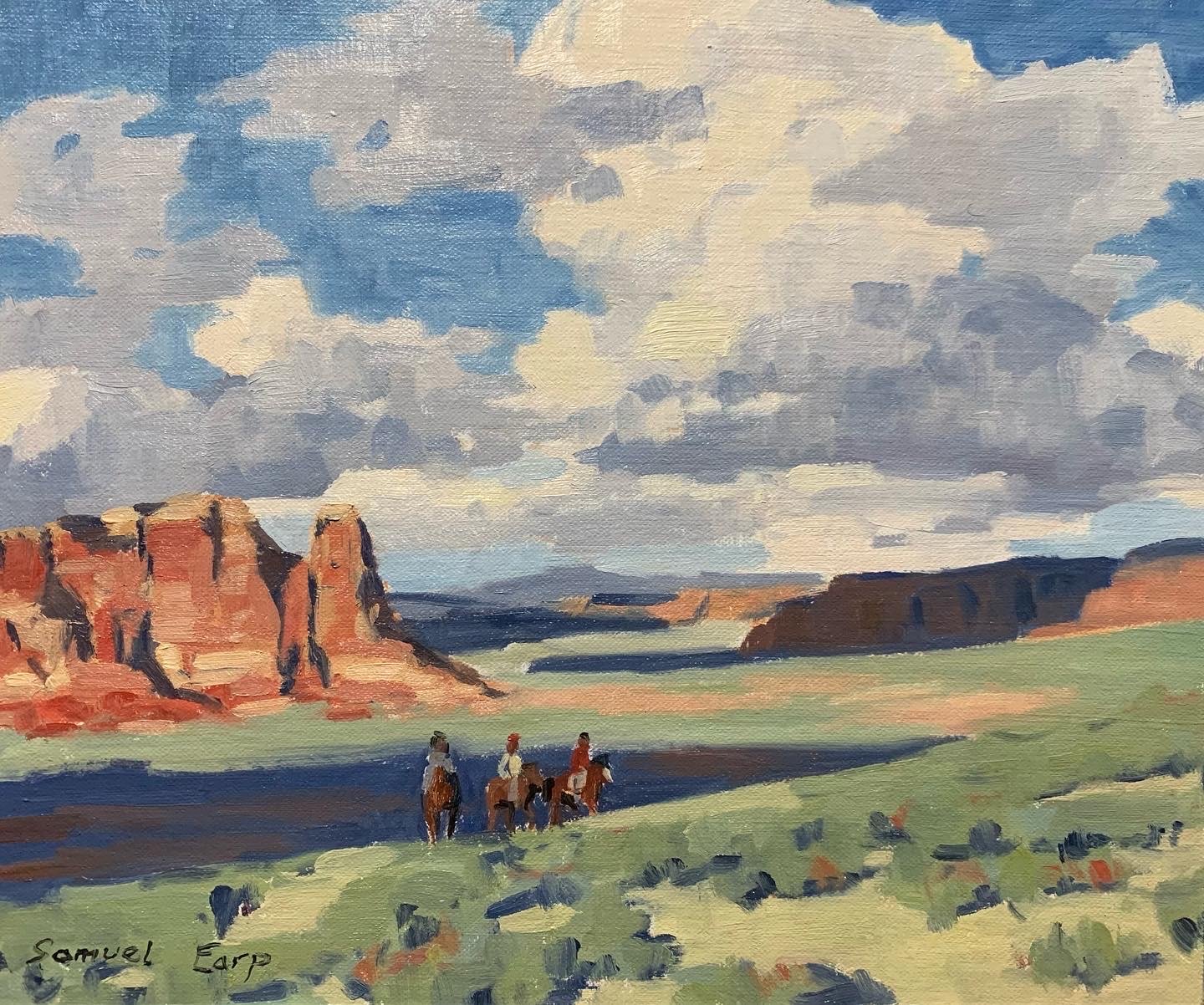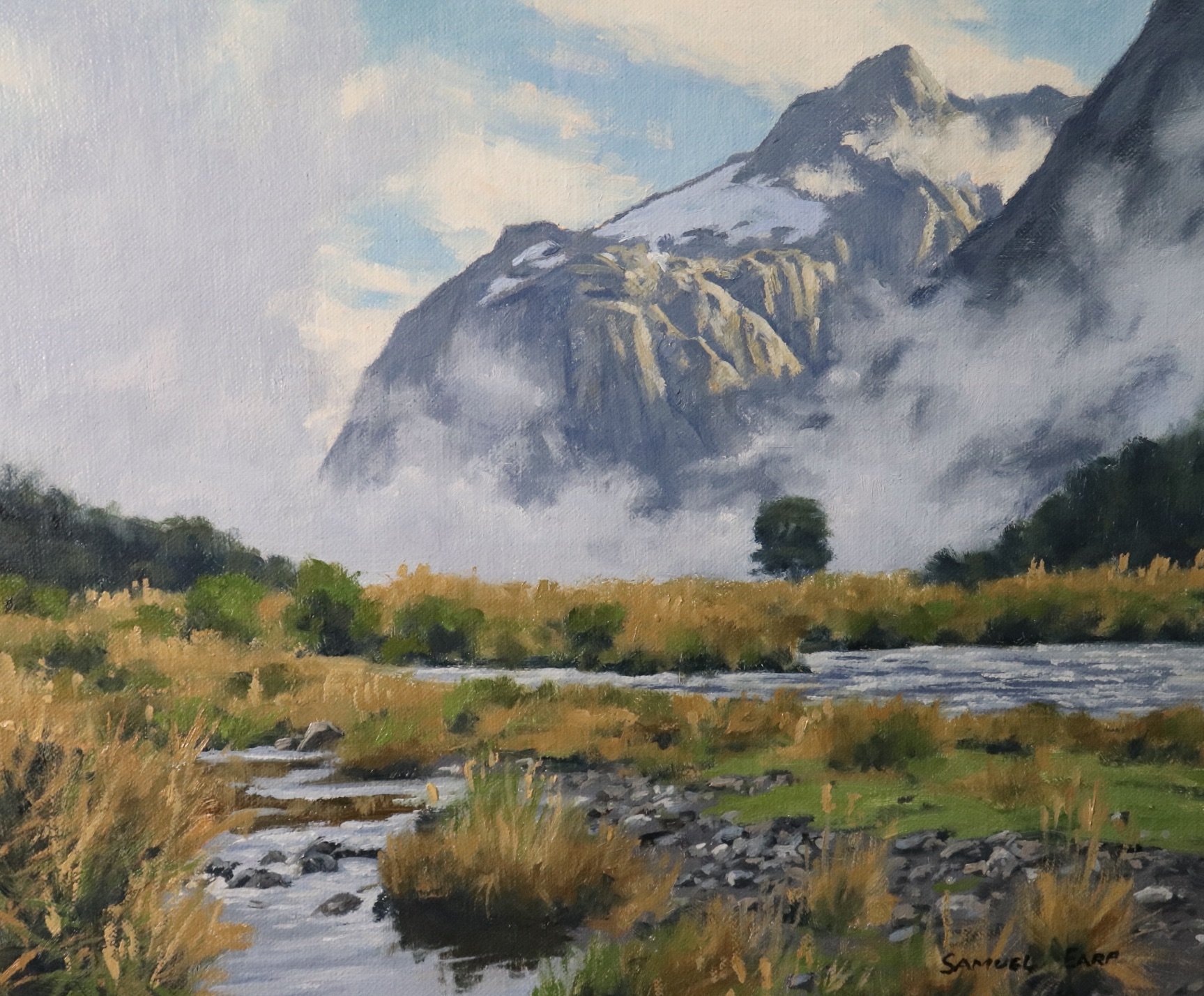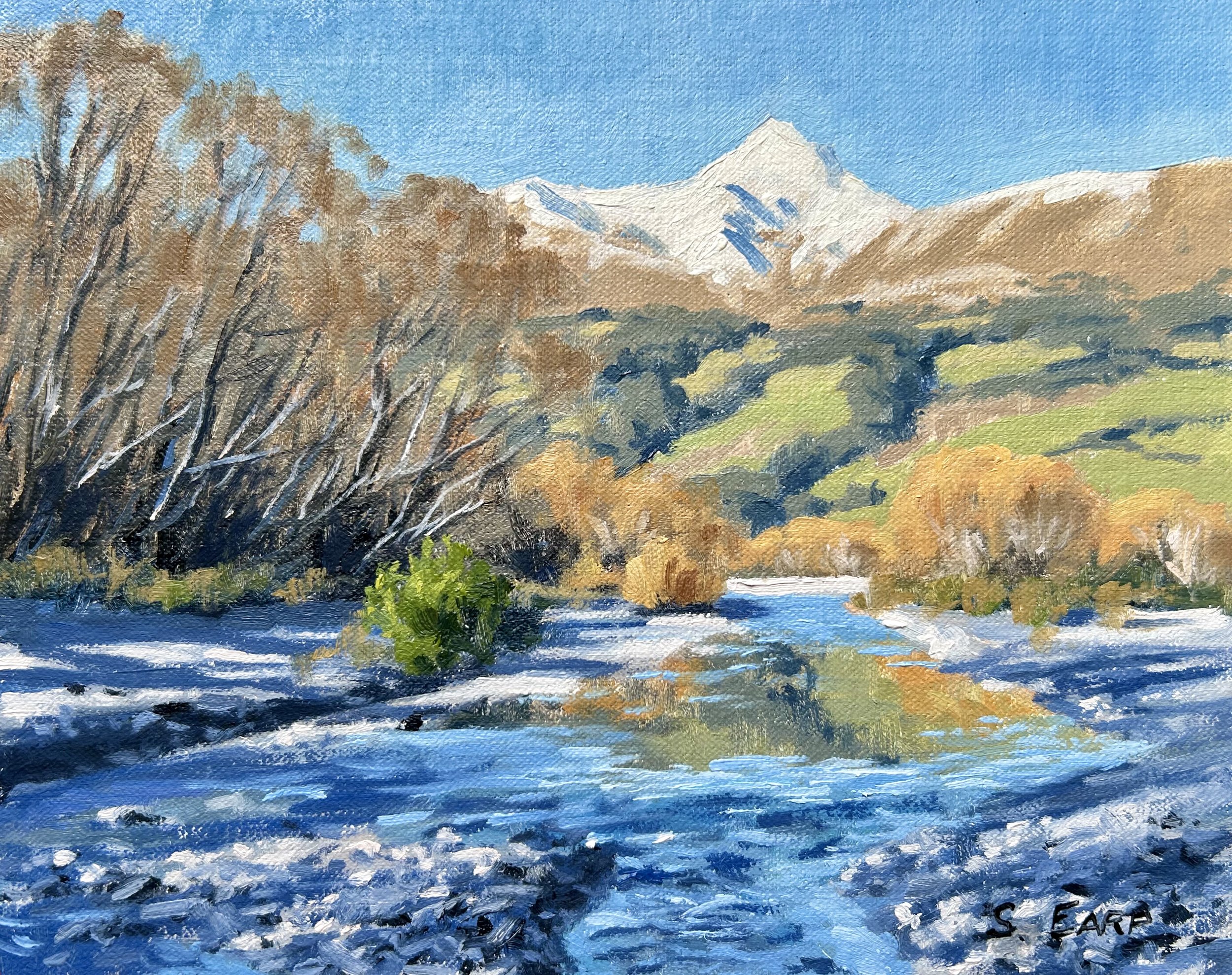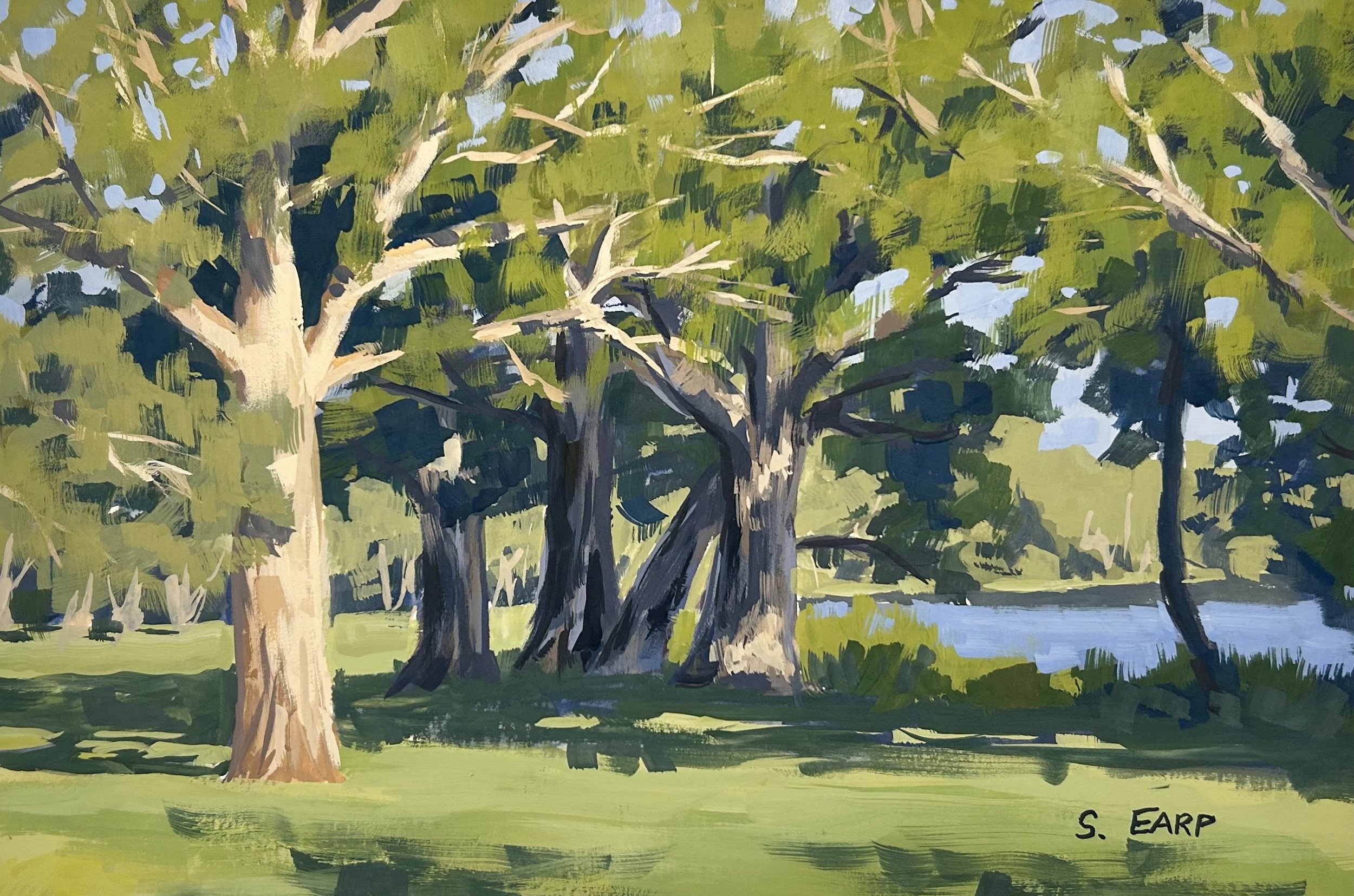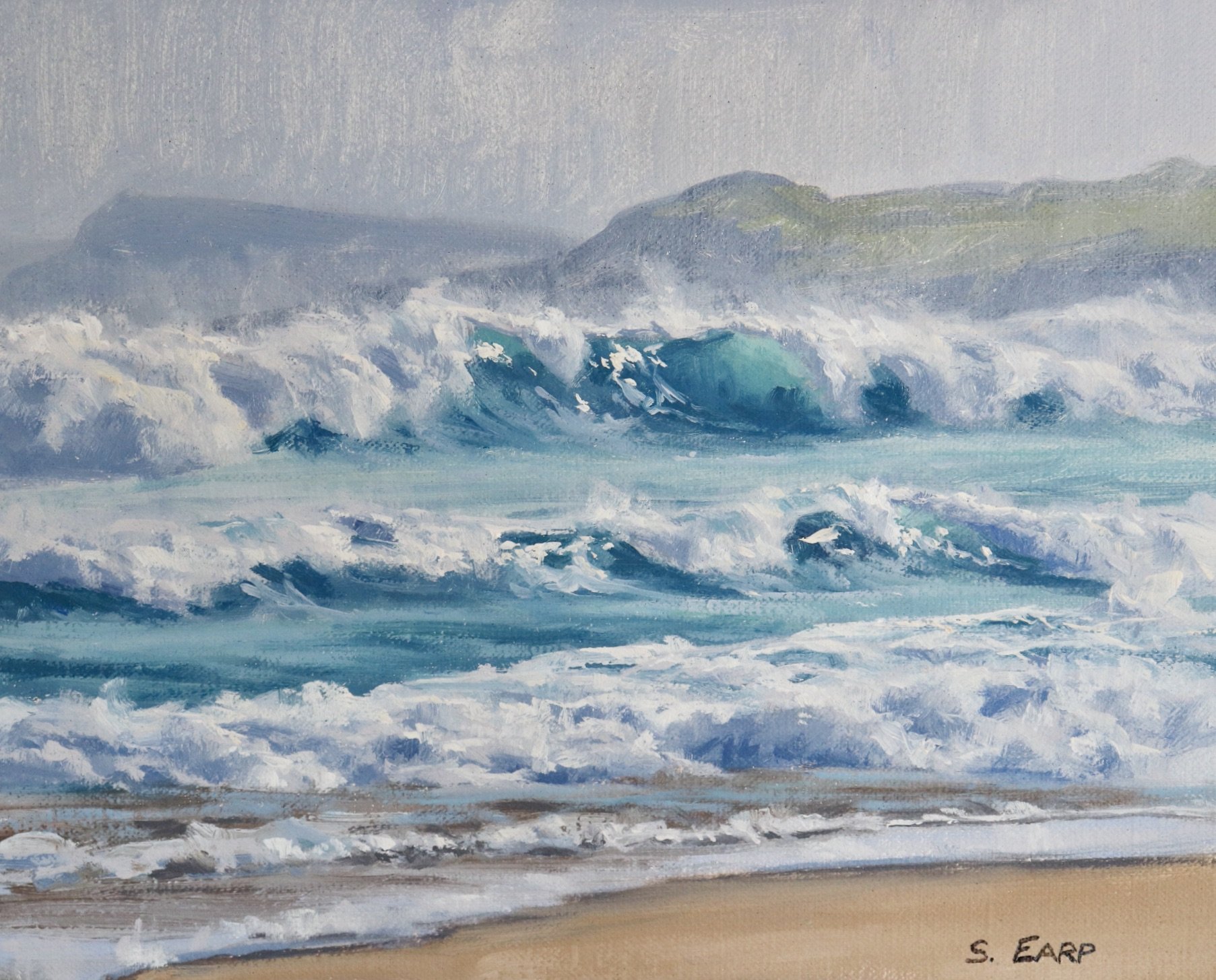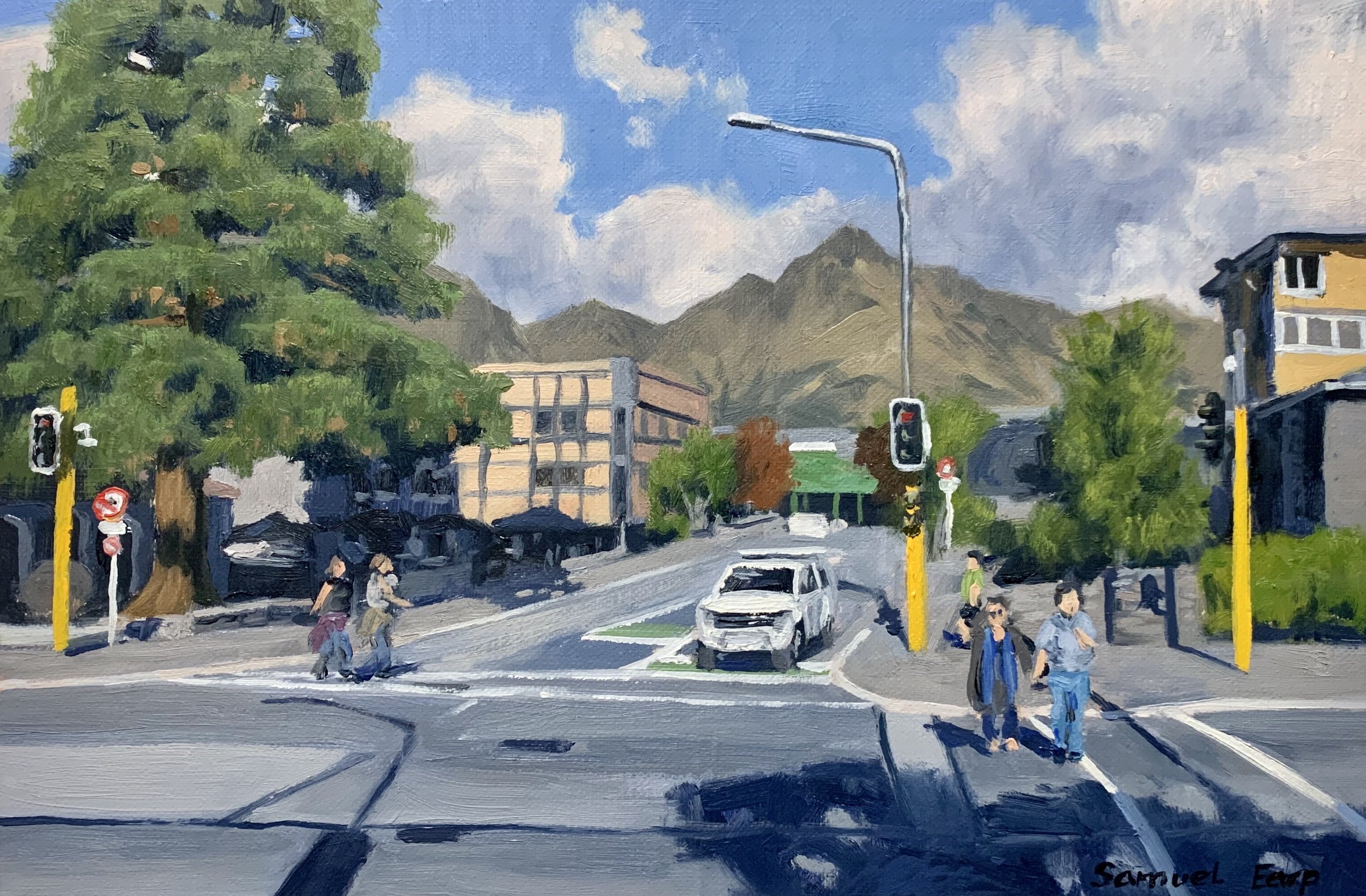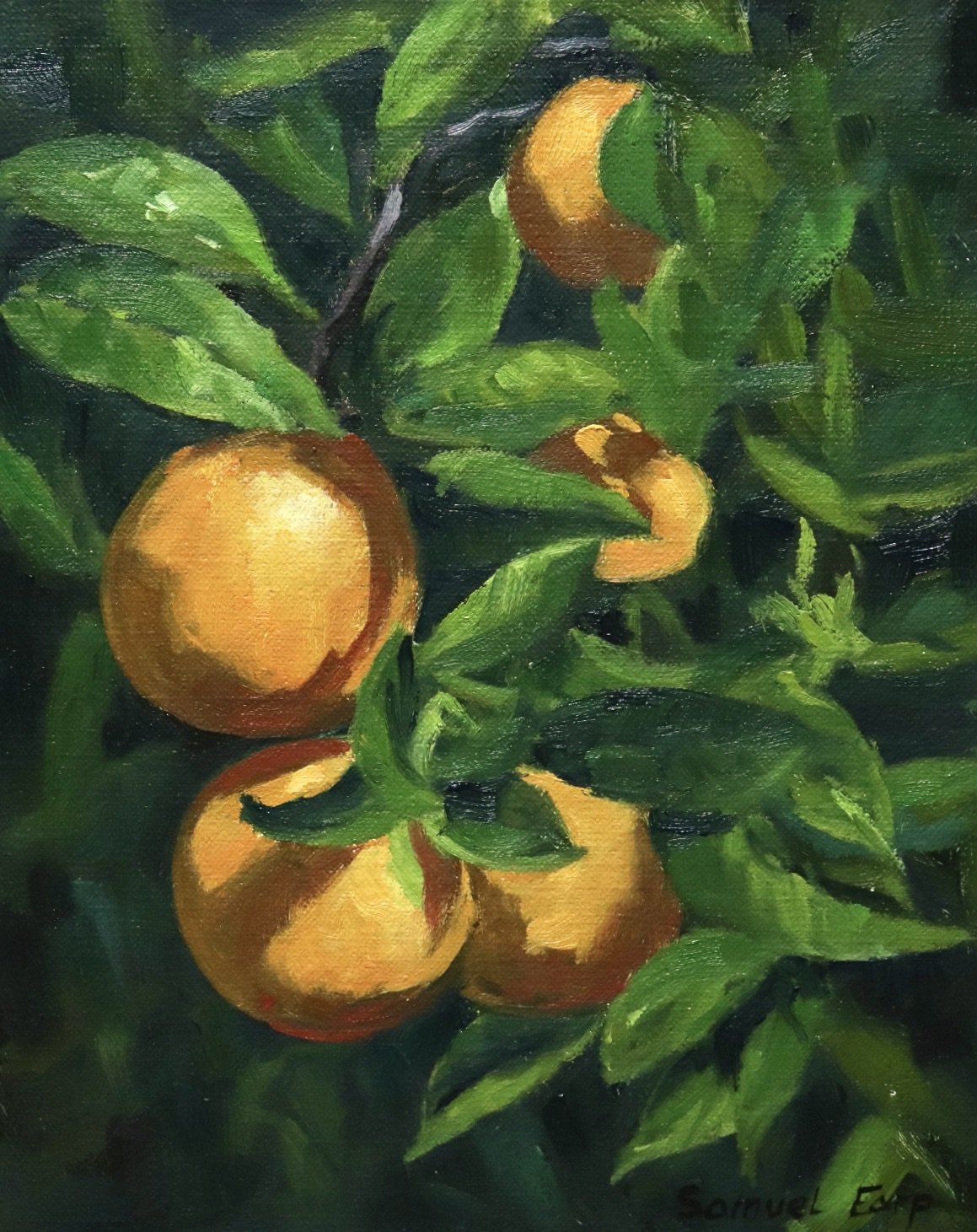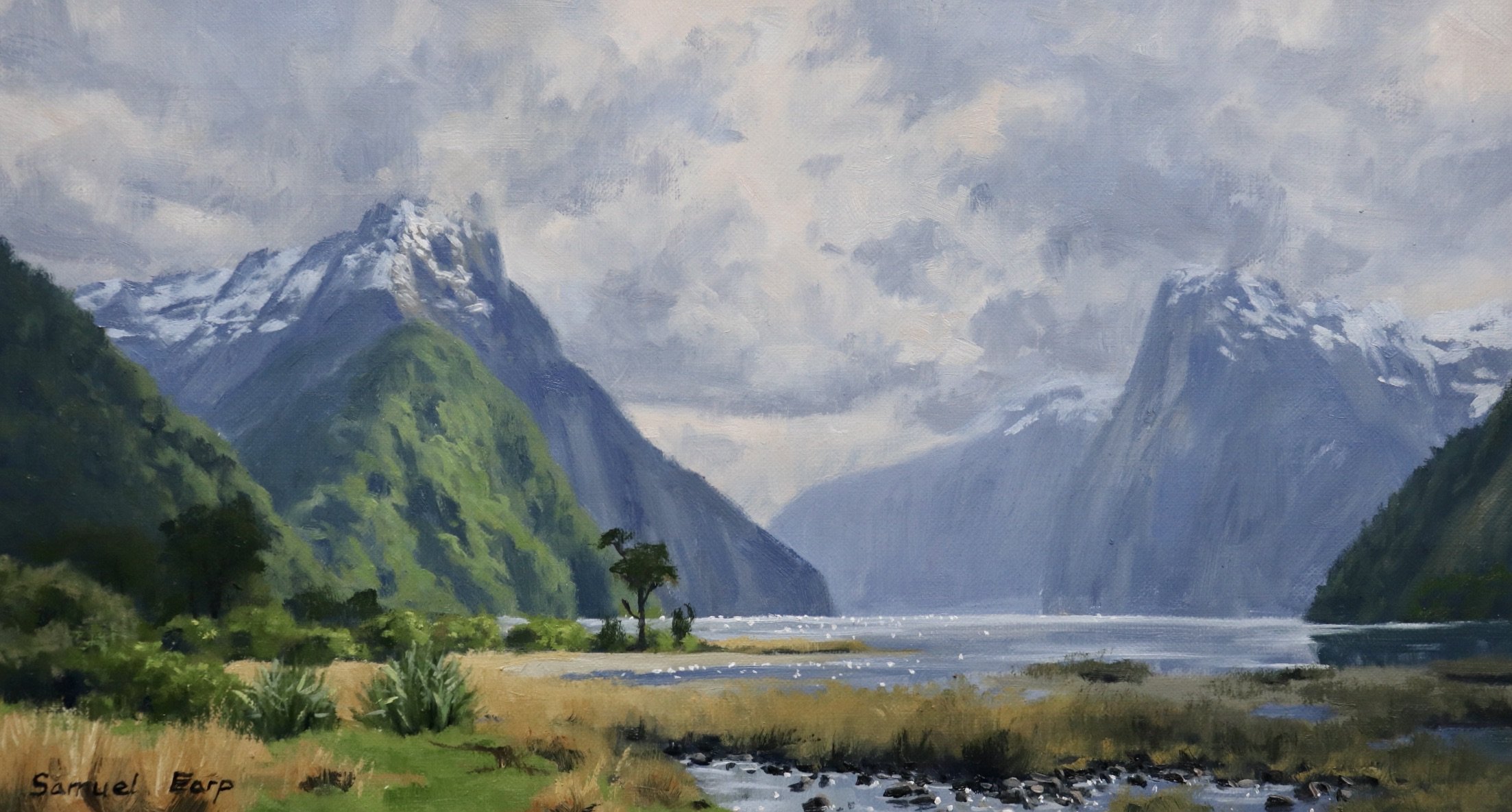Painting Workshop No.4
River Valley
By Samuel Earp
These lesson notes are intended for use with the ‘River Valley’ painting tutorial video. If you stumbled across this page you can purchase the video by clicking the link below:
Reference Photos
Composition
This painting incorporates a steelyard composition
The steelyard composition is formed of a large mass that is counterbalanced on a theoretical fulcrum by a smaller mass further away from the centre.
In this case the large poplar trees on the left form the main weight in the painting and is counterbalanced by the smaller conifer trees in the distance on the right.
This composition maintains balance in the whole painting.
Planning Your Painting
Before you get into a painting I would always recommend doing some pencil sketches to plan your composition. A painting is much more likely to be a success if it has a solid foundation.
When you have an idea for a painting, start designing the composition by doing a few quick thumbnail sketches in your sketch book. Spend around two to three minutes on each sketch.
Once you have done a few thumbnail sketches and have a good idea of your painting design you can then complete a final pencil sketch. The pencil sketch will help you finalise the composition and give you a good idea of the tonality of the subject you are painting.
I use a range of pencils when sketching, including a 4H, 2H, HB, 2B, 4B and 6B. The pencil sketch will be the foundation for your painting which should help you in creating a pleasing composition.
Colours and Values
Throughout the video you will hear me talk about colours and values. It is important to have a basic understanding of colour theory and values when painting as it will make colour mixing easier for you. Luckily it’s easy to learn the basics and the rest is just brush mileage.
Colour Theory Terms
Below are some terms I use throughout the video and their meanings.
Hue: This refers to the main attributes of a colour and is dependent on its dominant wavelength, irrespective of how light or dark the colour is. For example, the colour is discernible as blue or a red etc.
Saturation or Chroma: This refers to the purity or intensity of a colour. You can reduce the saturation of a colour by adding a neutral grey or an opposite colour on the colour wheel.
Value: This is how light or dark a subject is. Getting your values correct is one of the keys in the success of a painting.
Tone: This is a broad term for describing a colour that is not a pure hue or black or white. It is a widely misunderstood term.
The Colour Wheel
For the benefit of people who are new to painting that are watching this video I will briefly go over the basics of the colour wheel. Knowing how the colour wheel this works can really help you with colour mixing.
Above is a simplified colour wheel. The colour wheel contains three primary colour blue, red and yellow and three secondary colours orange, green and violet.
When these colours are arranged on the colour wheel a primary colour is always opposite a secondary colour and are known as compliments or complimentary opposites. So, blue is opposite to orange, red is opposite to green and yellow is opposite to violet.
So why is this important?
If you want to desaturate a colour you can do this by mixing its complimentary opposite as the two colours will cancel each other out. In this manner you can create some neutral greys and browns especially when combined with white.
Complimentary colours also look good next to each other in a painting, for example greens often look more harmonious in a landscape if there are some reds amongst the mix or colours that contain red. If you look closely in nature, you’ll see naturally occurring complimentary opposites everywhere.
The Value Scale
Value is how light or dark a colour is and is perhaps one of the most important concepts in painting. The success of a painting rests on the relationship between the values in the painting. If they are not working and not in harmony, then the whole painting can lack any kind of depth.
Values in art work are represented on a scale with the highest value being white and the lowest value being black. The greys in between are known as mid or half tones.
In general, you will find your darkest darks and lightest lights in the foreground of a landscape. However, as landforms recede into the distance darks are not quite dark and lights are not quite light as the tonal scale narrows.
If you are unsure of where your light and dark values are in the scene you are painting, switch your reference photo to black and white and you’ll be able to clearly see where your light and dark values are.
In general, you’ll find that the sky is often one of the lightest values in the landscape. Grass is also generally lighter in value. Rocks and mountain faces are darker in value and often occupy the mid-tone range of the value scale. Trees are generally some of the darkest values in the landscape.
Colours Used in This Painting
I painted this art work in oils but you can also use acrylics. the colours I used includes:
-
Titanium white
-
Burnt sienna
-
Yellow oxide
-
Cadmium yellow
-
Cadmium orange
-
Quinacridone magenta
-
Ultramarine blue
-
Cobalt blue
-
Cobalt teal
-
Phthalo green
Brushes
Below is a general list of brushes I use for landscape paintings:
-
No.6 flat
-
No.4 flat
-
No.2 flat
-
No.2 filbert
-
No.1 round
-
No.0 round
-
1/4″ dagger
-
3/8″ dagger
Blocking-In the Painting
I am painting on a 11″ x 14” linen stretcher which I’ve toned with a layer of burnt sienna. This really helps with overall colour and tone of the painting and gives the art work a more traditional feel.
I sketch out my composition with a No.1 round brush and burnt sienna. I am using the medium Liquin Original for this painting, which thins out the paint and speeds up the drying time.
Paint Your Darks First
Whenever I begin blocking in a painting I normally start by establishing my dark values and shadows first, that way I can quickly establish the tonal range in the painting. It also then makes it much easier when you come to add the areas in light as well as getting the saturation of your colour correct.
Whilst in the original reference photo there are a few wispy cirrus clouds I felt the painting need some solid clouds in it so I used some cloud reference from a different photo. For the cloud shadows I have used a mixture of ultramarine blue, burnt sienna and titanium white. The burnt sienna being a dark orange desaturates the blue. I can make the value lighter by mixing in titanium white.
For the mountain shadows I mix ultramarine blue, burnt sienna, quinacridone magenta and titanium white.
The shadows in the trees are darker especially as the are in the mid and foreground. For this I use a mixture of Ultramarine blue, yellow oxide.
Now I have established my dark values it’s time to start applying some colour to this painting. I start with the background first and work forward.
The sky is the furthest zone away in the painting so I start with this. I paint the highlights of the clouds with a No.6 flat brush using titanium white mixed with a little burnt sienna. I also allow this to mix in with the cloud shadows I have just painted.
I paint the sky with a combination of ultramarine blue, cobalt blue and titanium white.
For the grass in the mid ground I use a combination of yellow oxide with some cobalt teal and then I round off the mixture by adding a little quinacridone magenta. Grass is generally light in value so I also add titanium white to the mix.
The grass in the foreground is a combination of ultramarine blue, yellow oxide, cadmium yellow and titanium white.
I start blocking in the foliage of the trees. Tree foliage is generally one of the darker values in the landscape depending on the species. I have found that broadleaf trees can have lighter foliage in spring that gets darker by the summer. In general I would always keep the foliage on the darker side.
The tree foliage is a mix of.ultramarine blue, yellow oxide, cadmium yellow and titanium white.
I paint the foliage on the trees in the mid ground and the sun lit slopes of the distant mountain.
when I paint the sunlit areas of the distant mountain I need to keep in mind that the slopes are naturally light in value and low in chroma due to the tussock grass that is growing on it. These grasses are naturally a golden low-chroma olive green.
I mix a desaturated colour of yellow oxide, ultramarine blue, quinacridone magenta and titanium white.
The silty sand in the flood plain is a mixture of ultramarine blue, burnt sienna, titanium white and I warm it up with a little yellow oxide.
Adding Details and Modelling
Once the block-in stage is complete I allow the painting to dry. Now I can start adding details to the painting.
As I apply the details to my painting for the most part the new layers I add are generally a lighter value than the previous layers. We want to build up these layers to create a 3D form and we will be saving our lightest values until the end of the painting.
I work over the sky again and refine the clouds. I am using the same colours that I used in the block-in stage. The cloud highlights are a little lighter.
I start adding detail to the foliage in the trees and for this I use a 3/8 dagger brush. These brushes are brilliant for painting foliage as you can create lots of different marks. You can use the flat end of the brush and use the tip for finer marks and so this is my third tip for painting trees.
I use a No.2 flat brush to create more texture in the foreground grass. I still use the same colours I used previously but I vary the amounts of colour in the mix to create different tones. I also add some additional colours such as cadmium orange and burnt sienna.
I use a 3/8” dagger brush to paint some reflected light in the shadows of the poplar trees on the left of the painting. For this a mix ultramarine blue, yellow oxide, burnt sienna or cadmium orange. I can make the value lighter by adding titanium white.
I can also mix in a little phthalo green which can add to the intensity of the shadows.
add more details to the foliage of the poplar trees again using my 3/8” dagger brush. The green still mostly consists of the colours I used previously but I have also used a little cadmium orange and phthalo green as well during the process.
I’ve made the value in many of the leaves lighter to communicate a 3D form and a sense of string sunlight illuminating the leaves, however I have maintained that saturation of the colour by mixing in more cadmium yellow.
Painting tip: if your foliage colours are looking too green or cold then mix in a colour that contains red, its colour opposite. this will desaturate the green. use quinacridone magenta, burnt sienna or cadmium orange.
Final Details
I have been saving my lightest values for the end of my painting and this is what will bring the whole painting together. In general I am just adding a few final details and finishing touches.
I finish painting the poplar trees on the left by adding some final highlights where those glossy leaves are reflecting the direct sun. This is where I have saved my lightest values. For this I mix a combination of titanium white with a little cadmium yellow and a small amount of phthalo green. I apply the paint with a No.0 round brush.
I paint the negative spaces within the poplar trees which helps to further define their shapes. I also refine the trees by restating some of the shadows if required.
I use my tree highlight mix to add a few suggestions of blades of grass shimmering in the sun.
Subscribe to me on Patreon
Get instant access to all of my painting videos and a new video every month for $5 per month.
